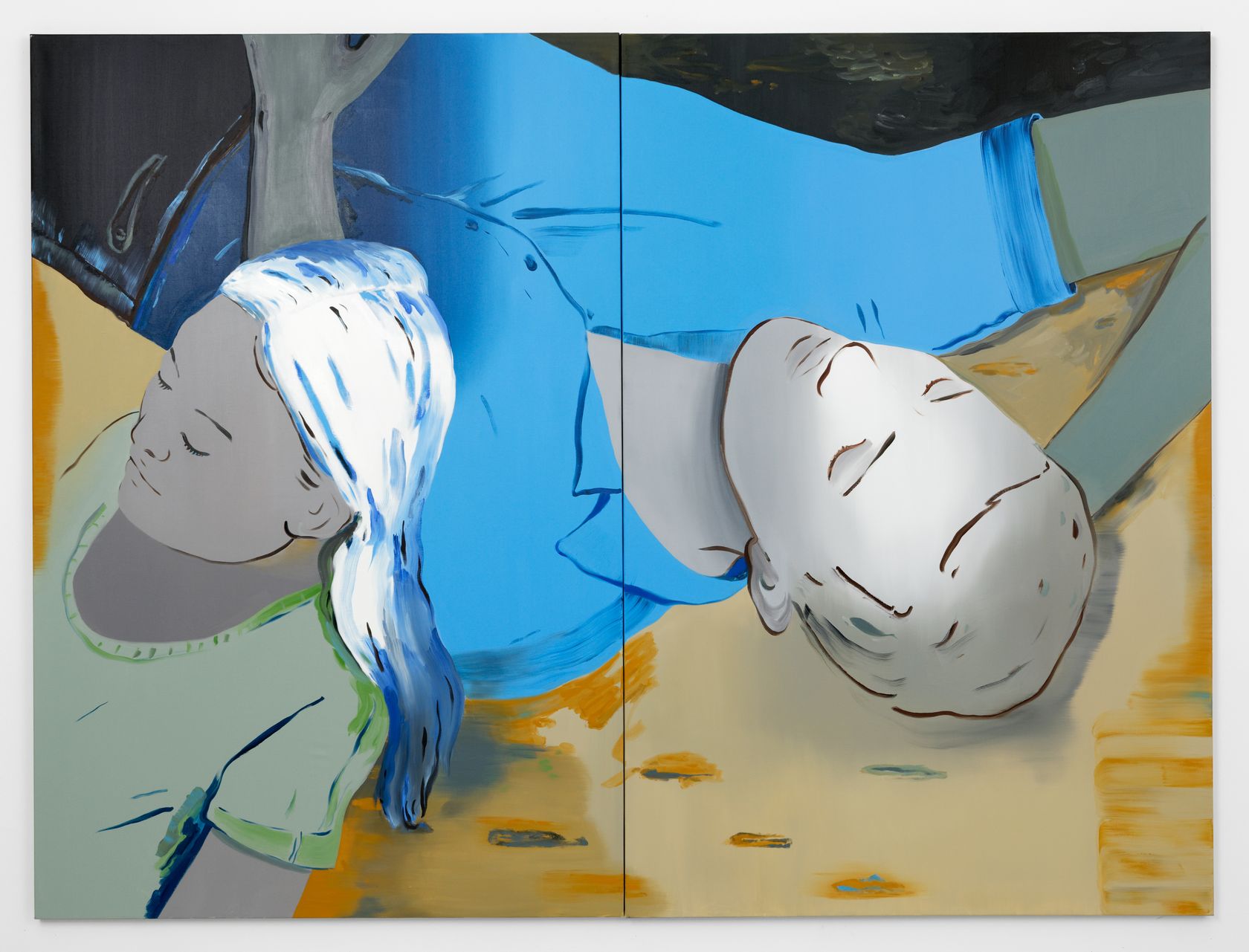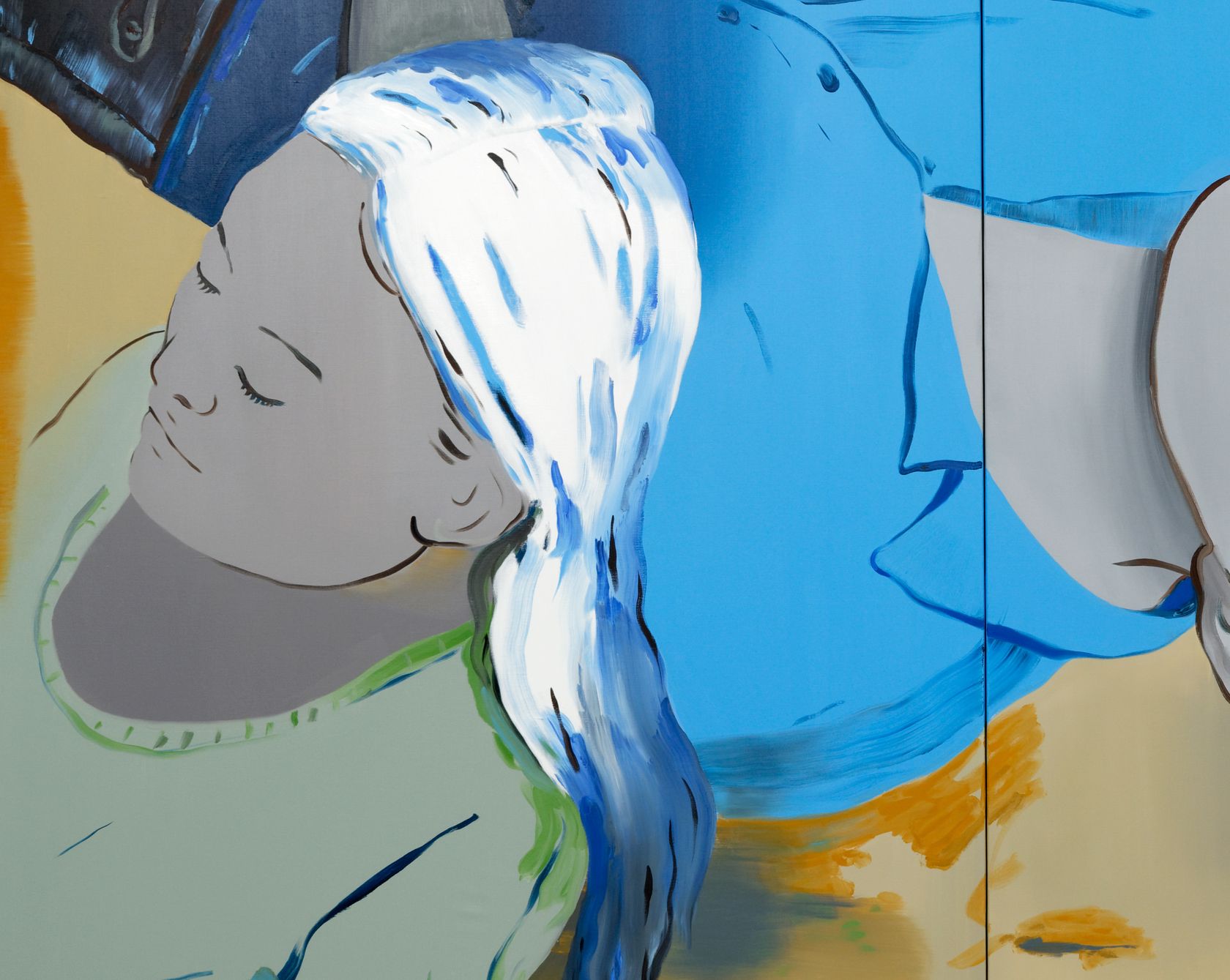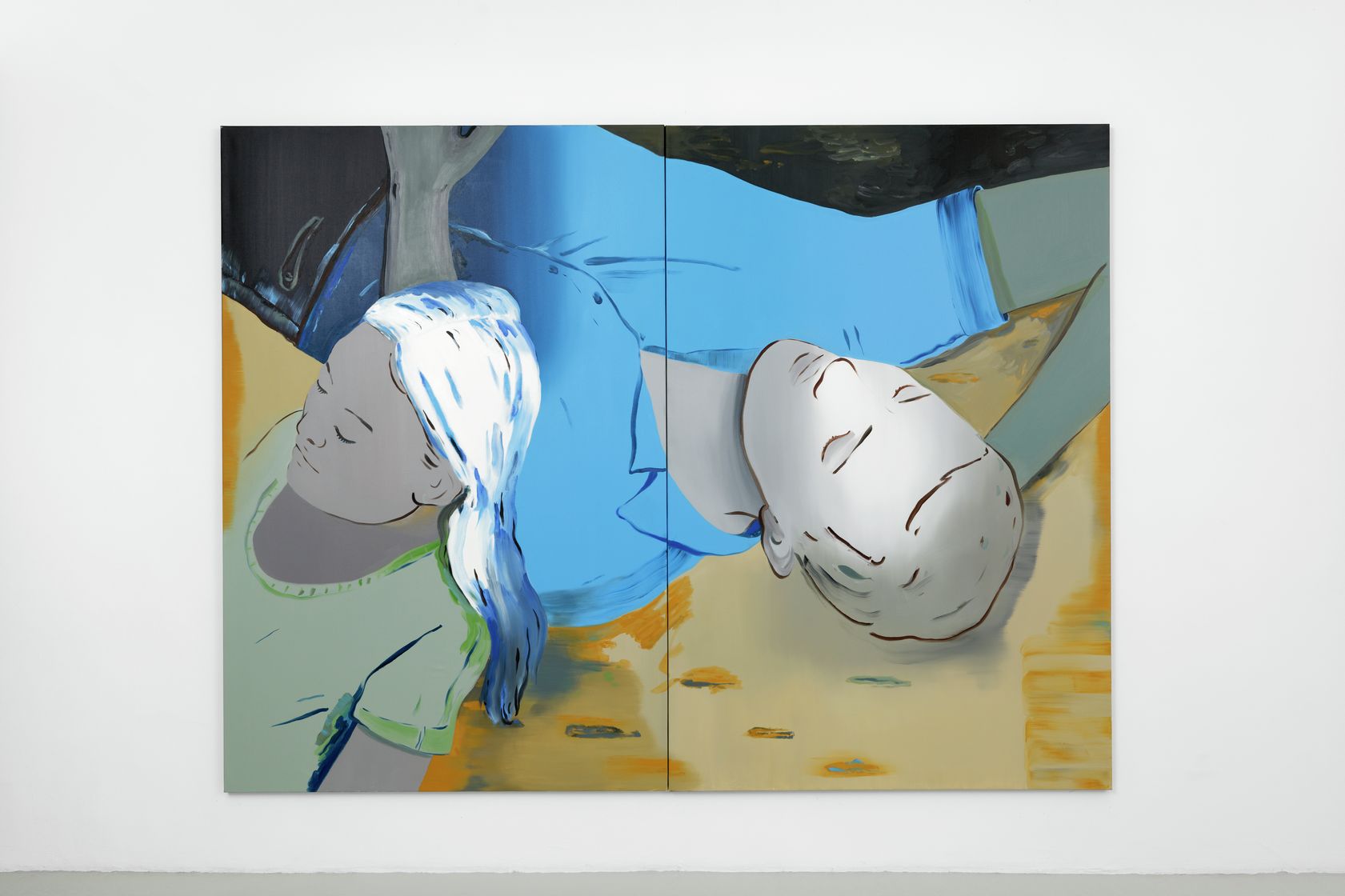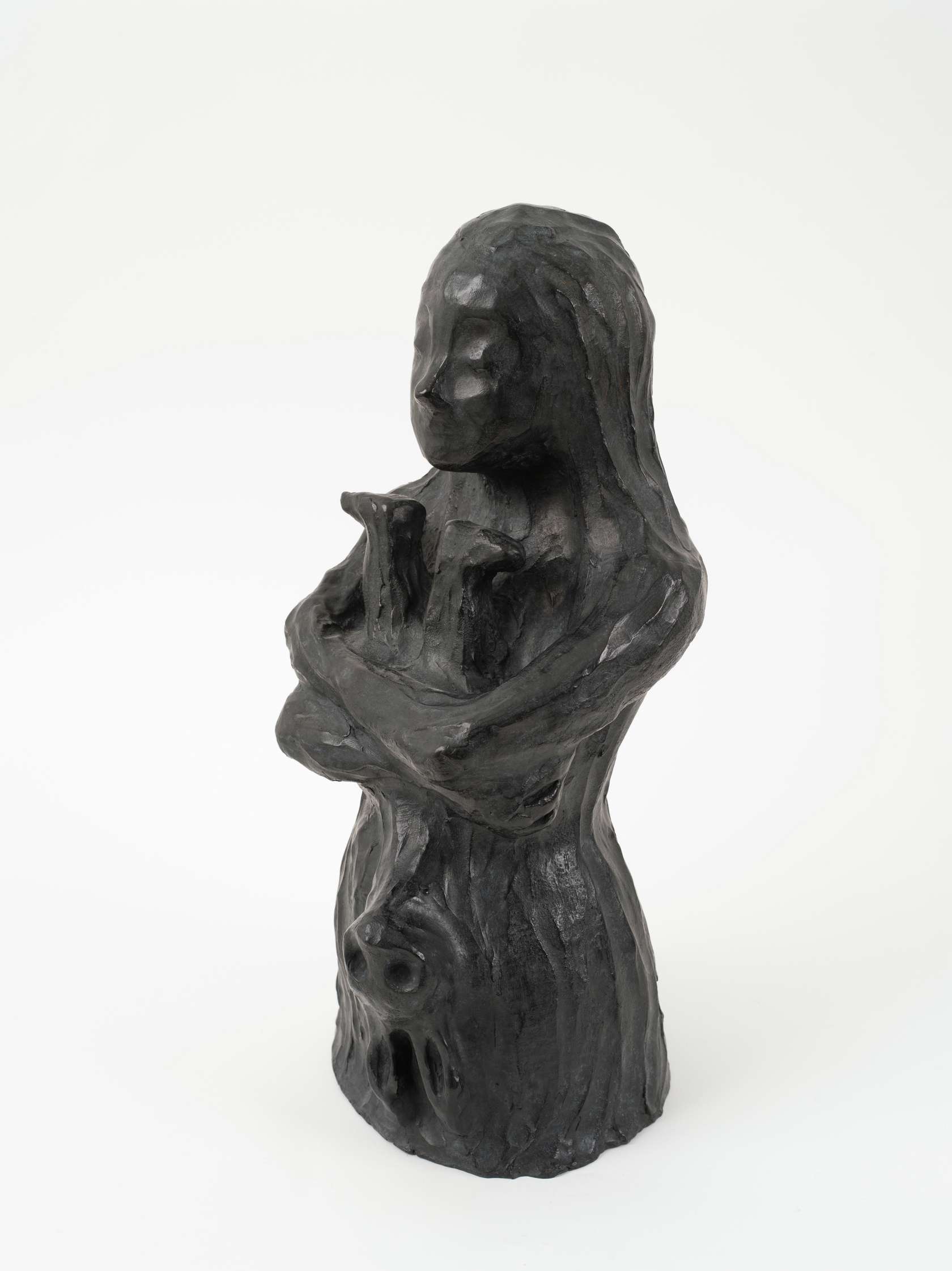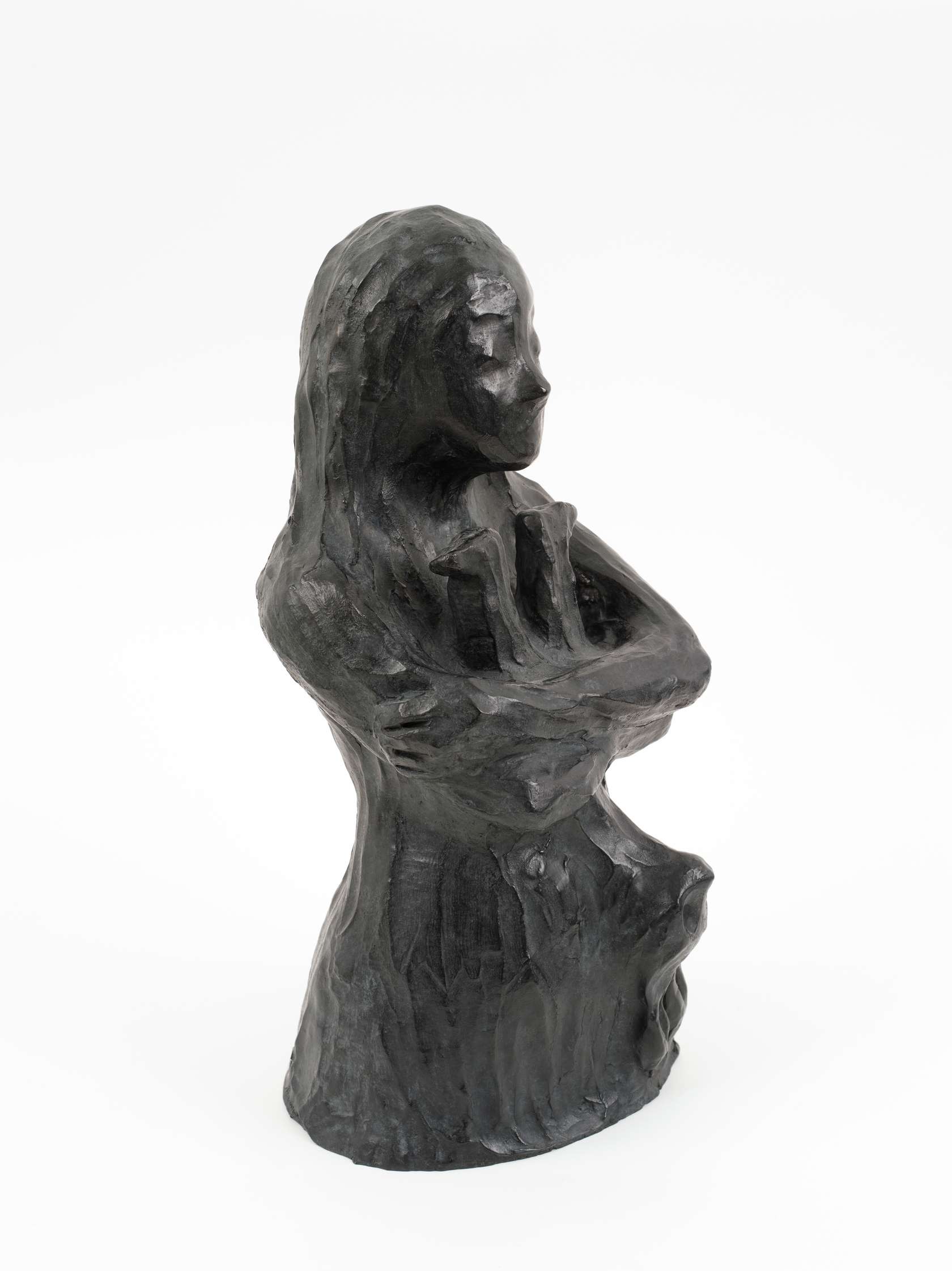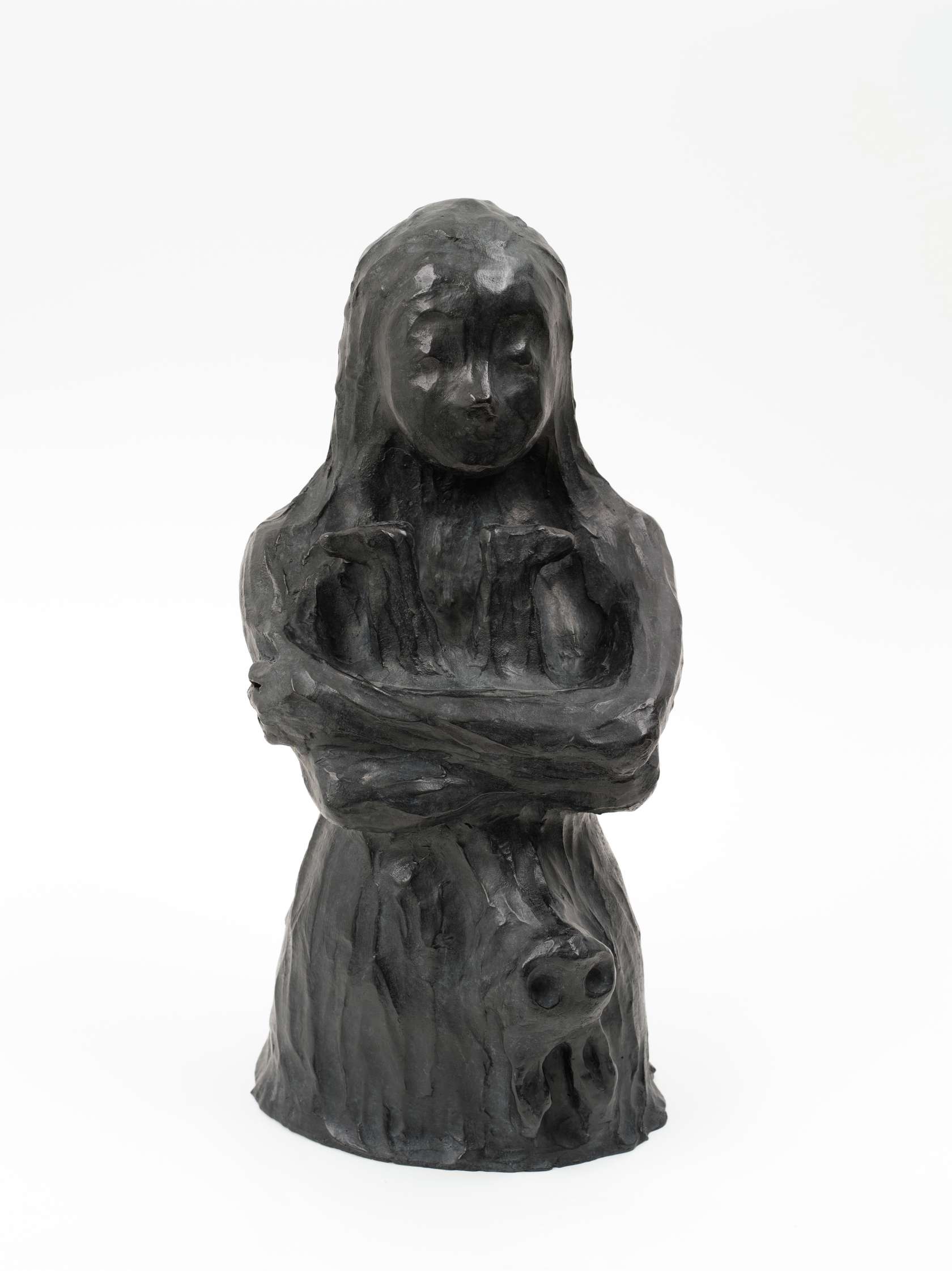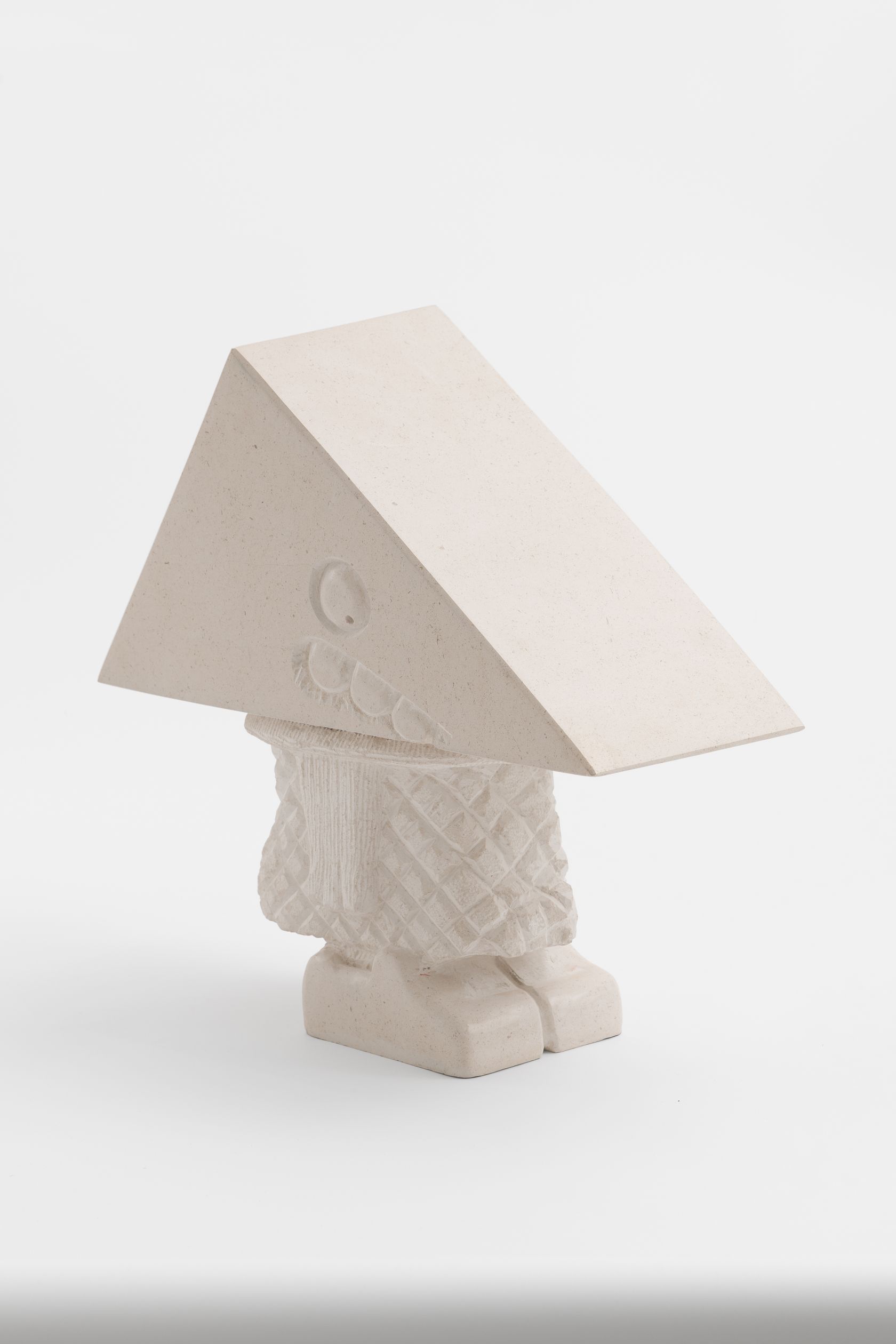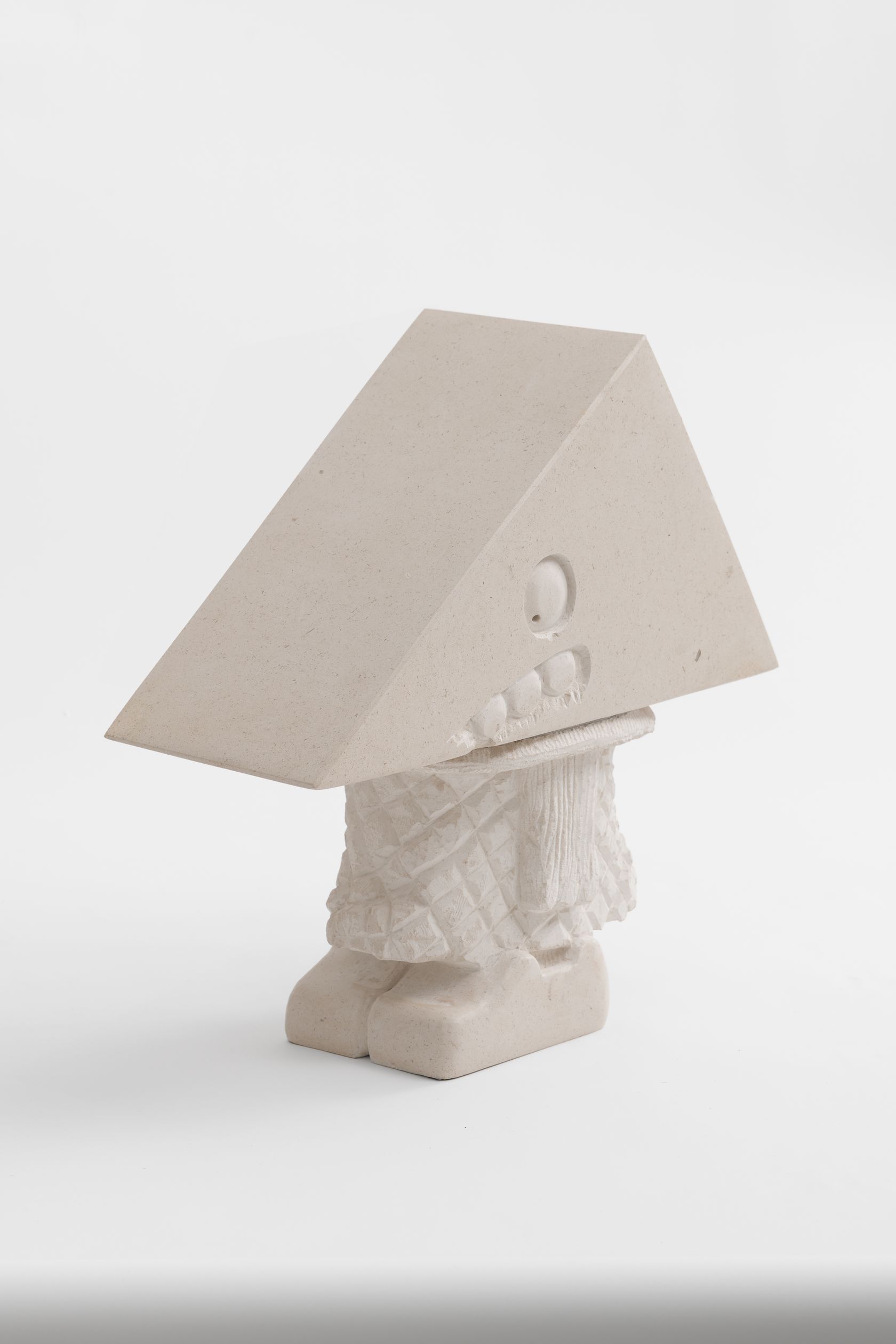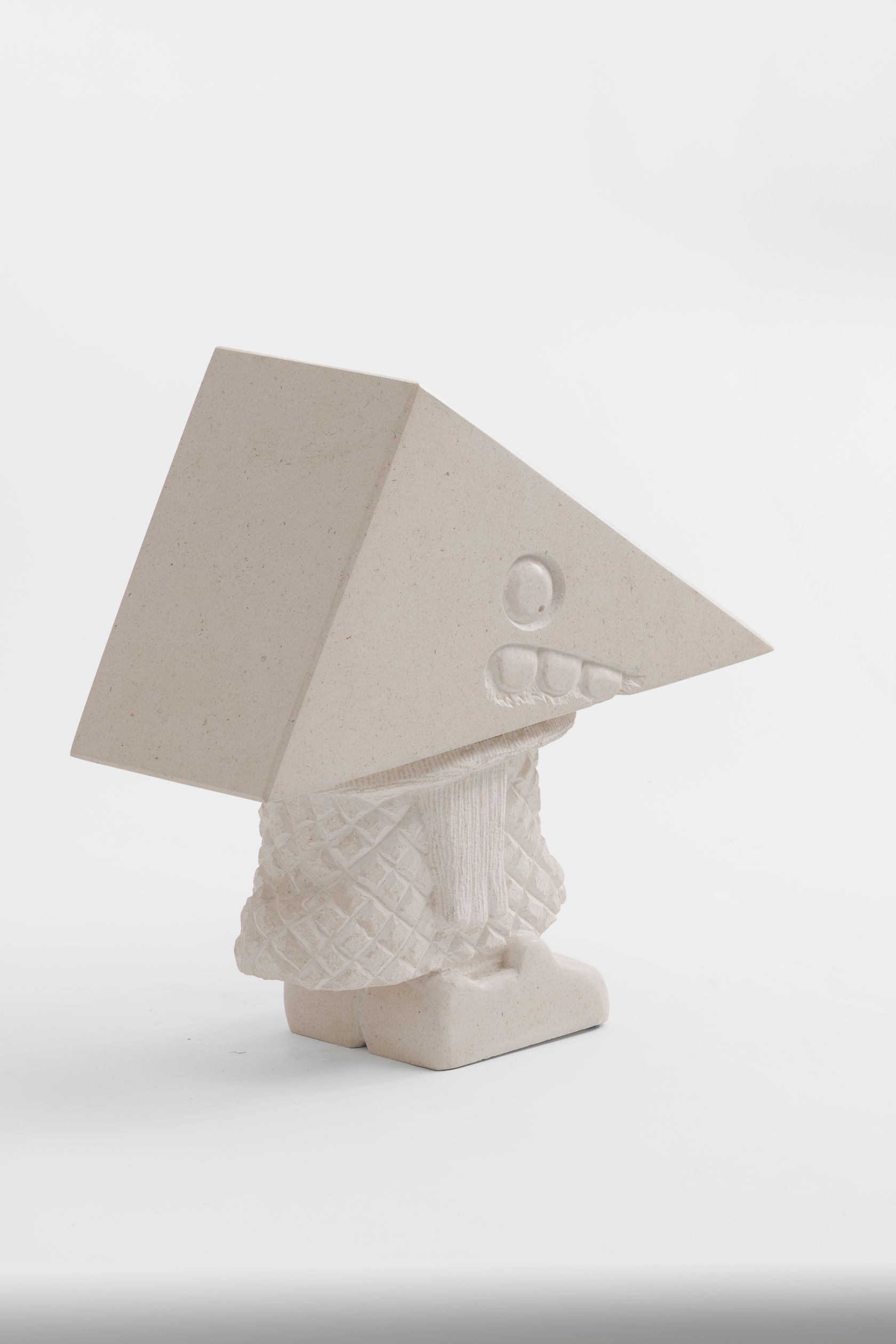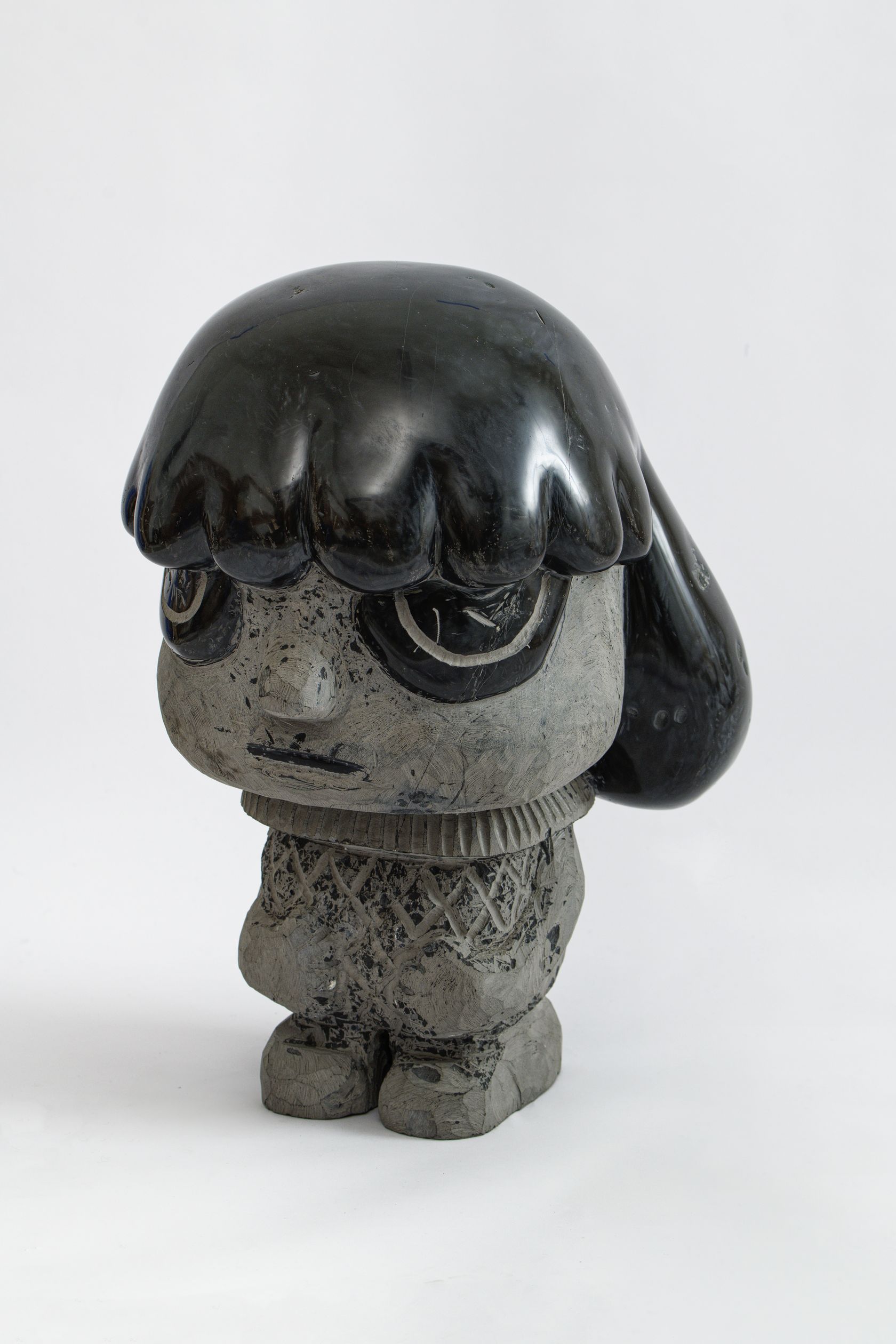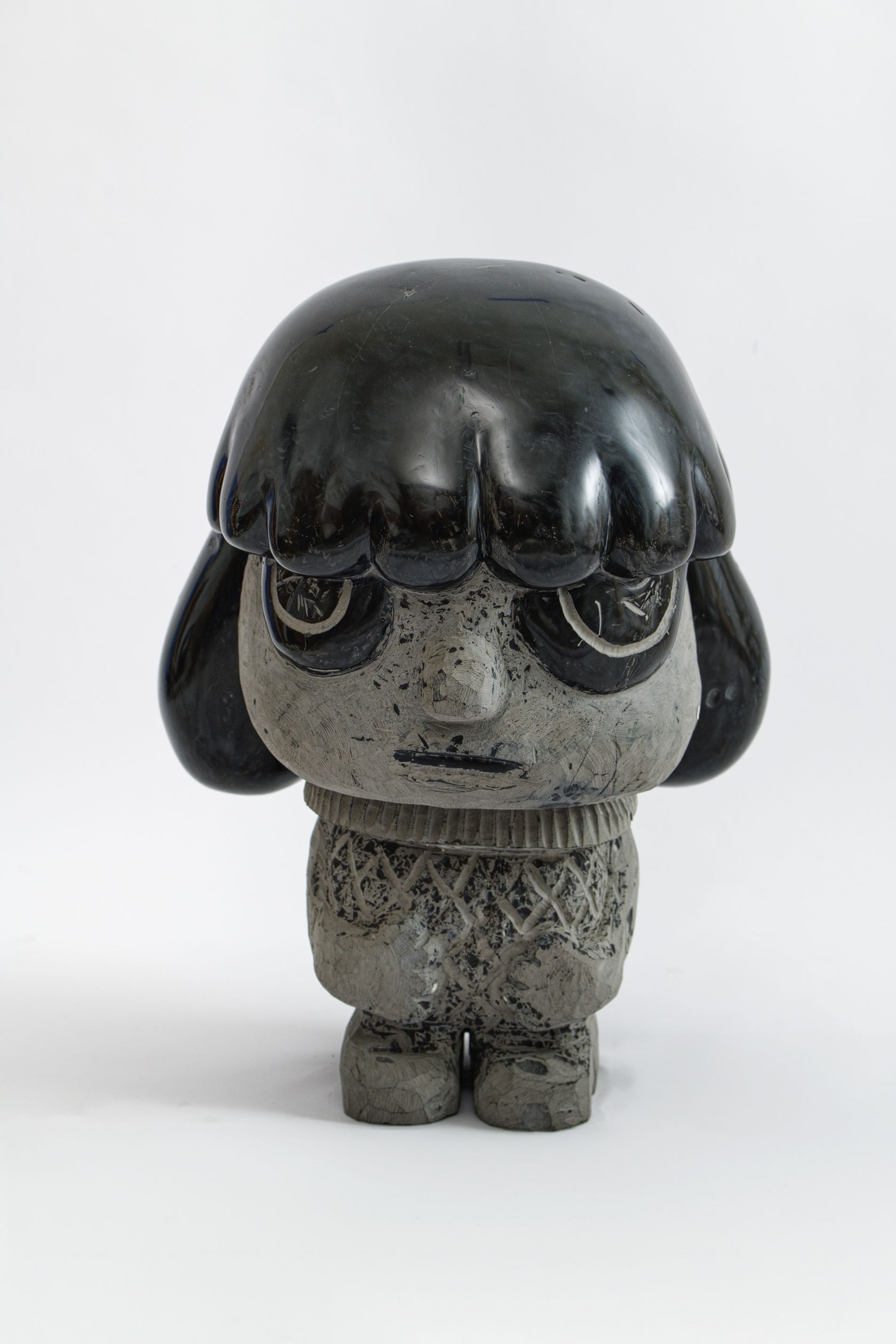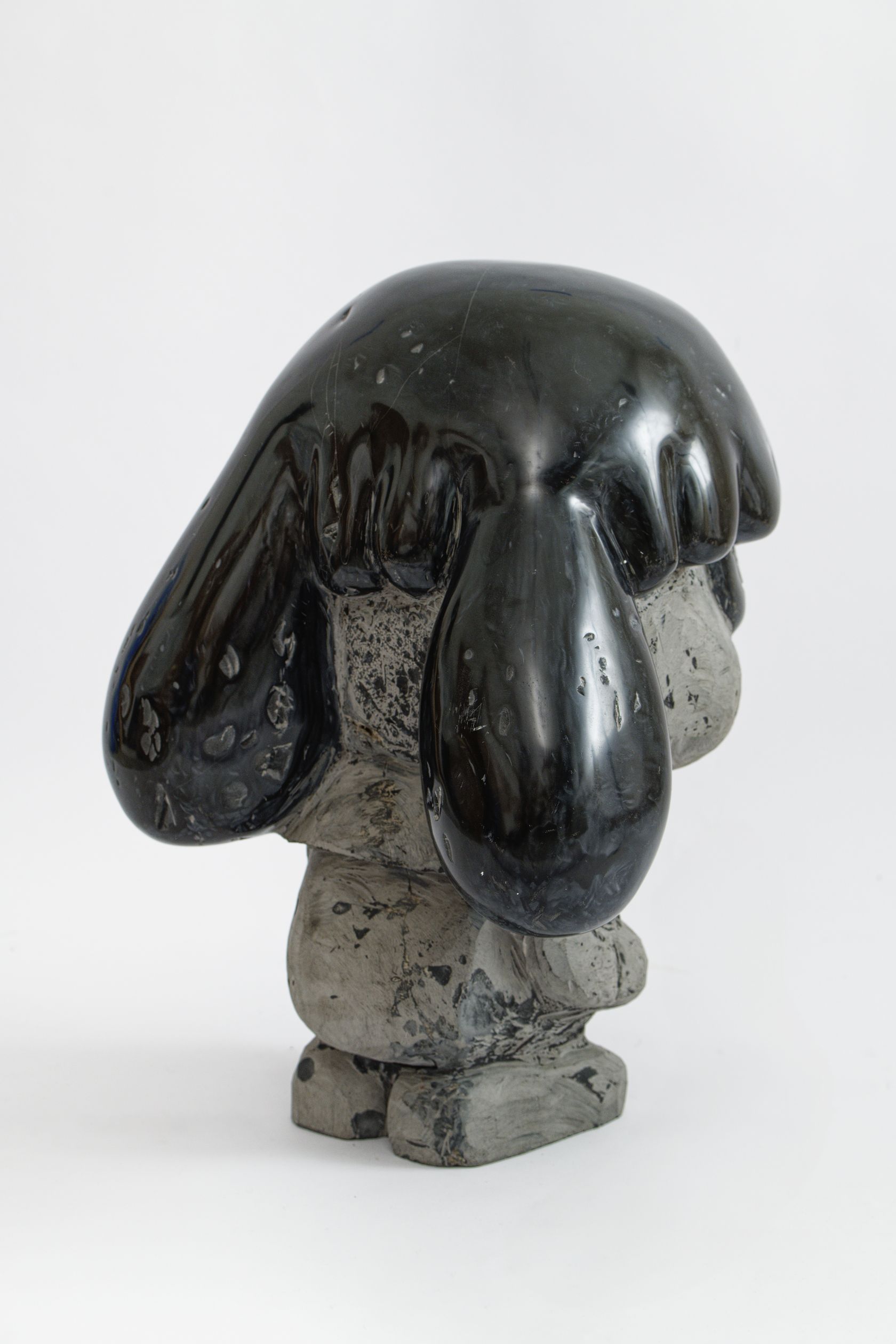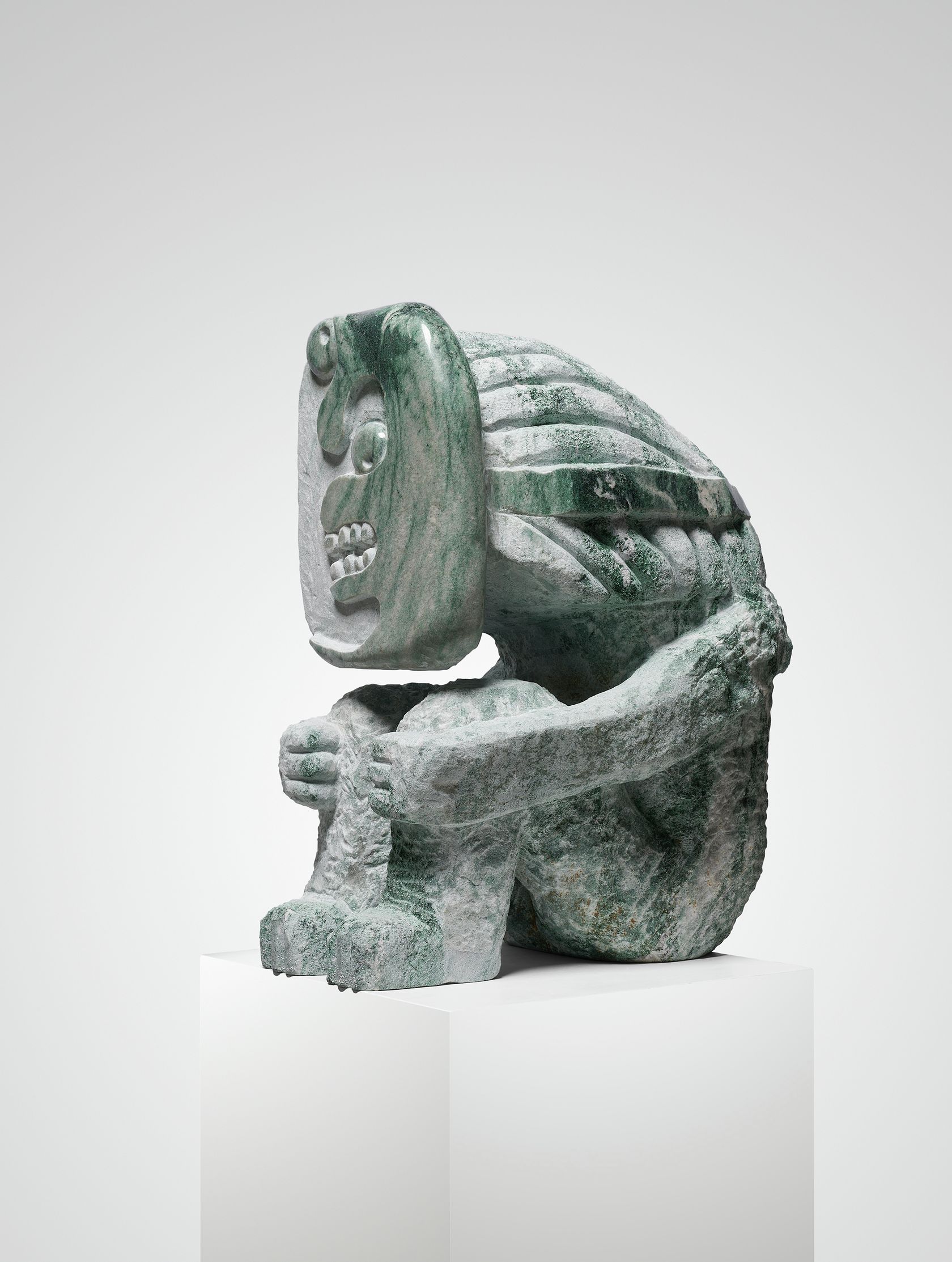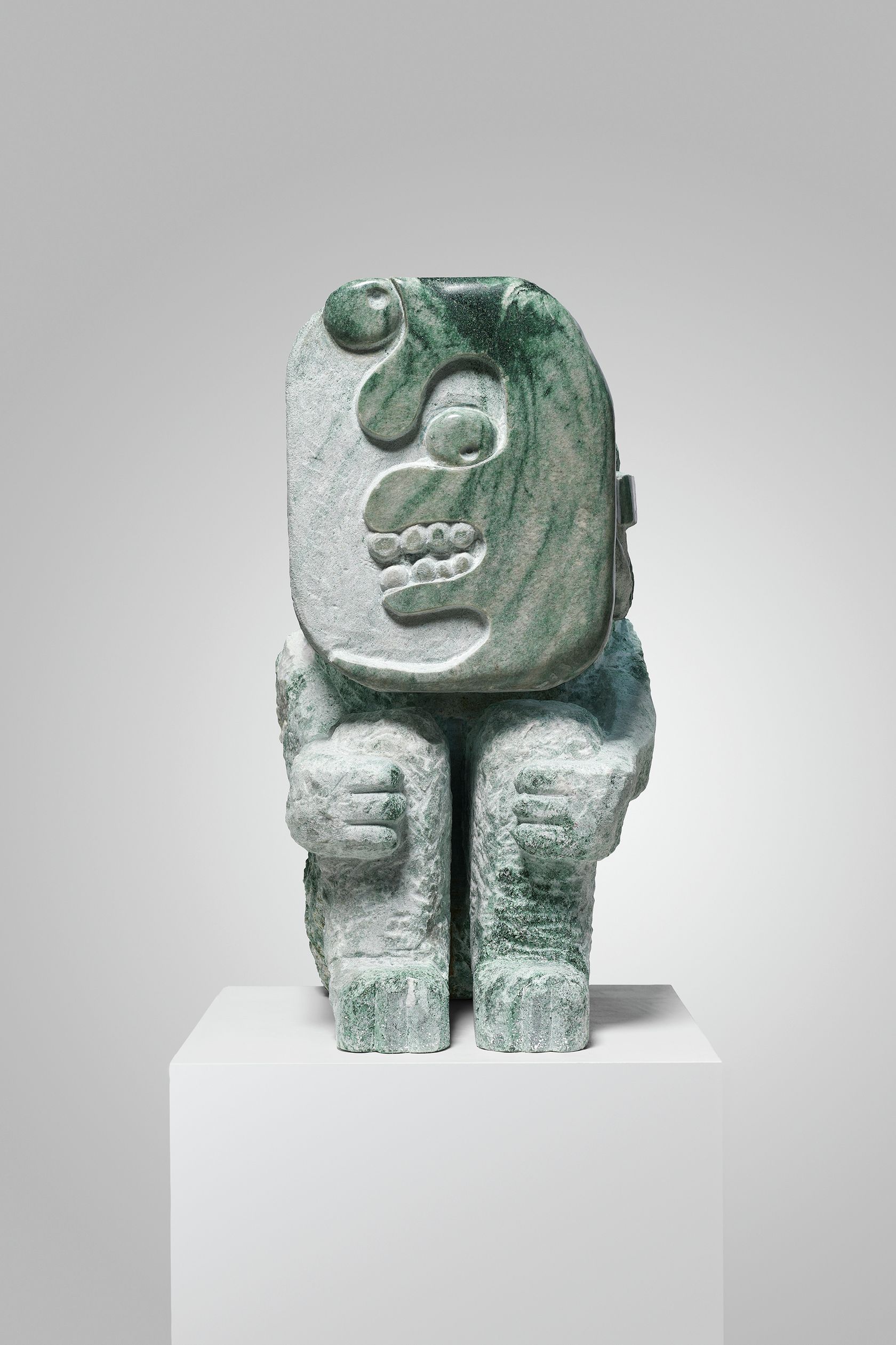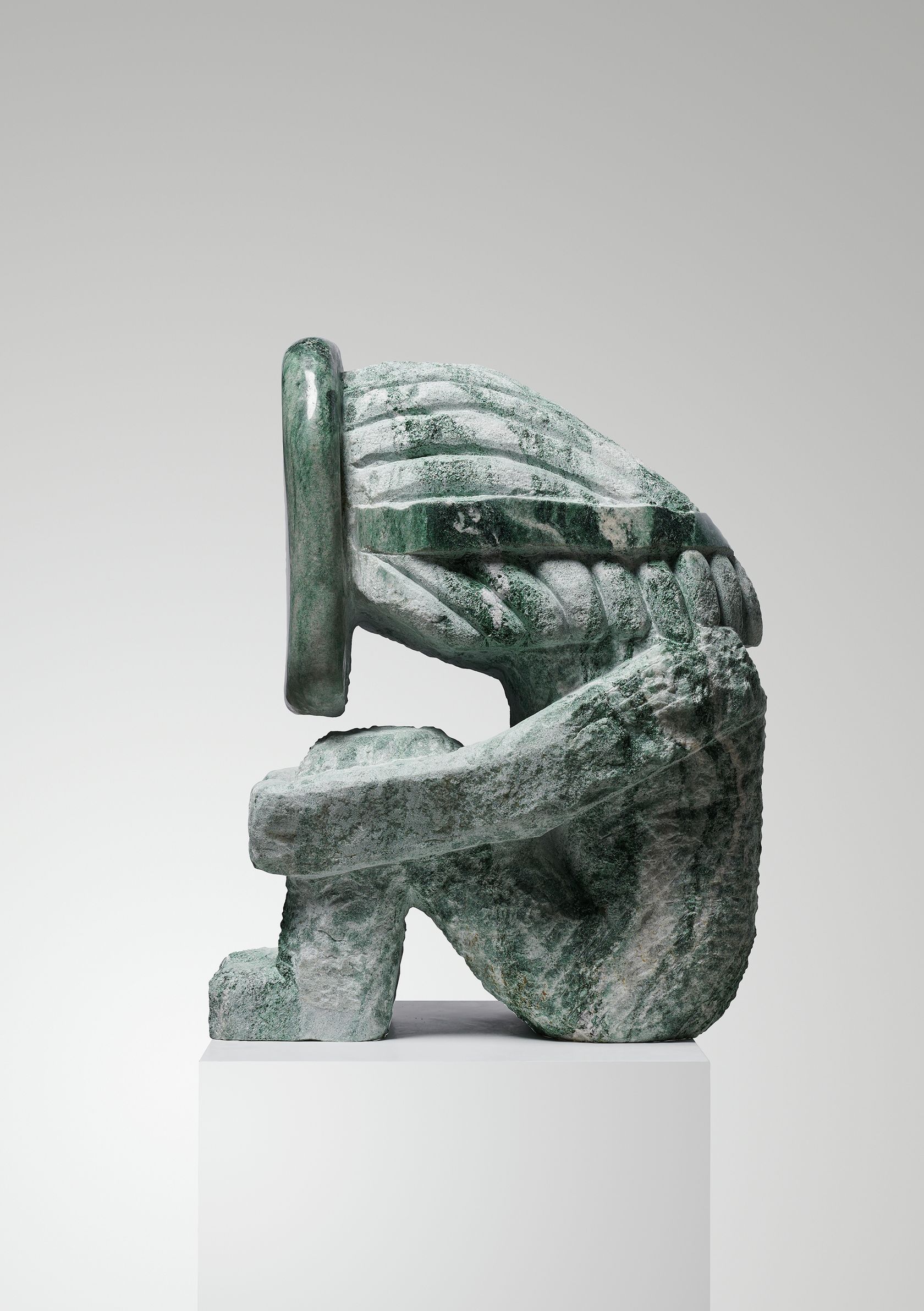To learn more about available works, please provide your contact information
Born in 1985, the painter Amélie Bertrand immediately gained recognition on her graduation from the School of Fine Arts in Marseille. By means of her impeccably smooth execution, the artist is able to distance herself from ideal landscapes inspired by nature, and shape decors that fall somewhere between dreams and nightmares.
The planes and surfaces of her works are assembled in a complex and meticulous manner, branching out into skewed perspectives and shallow horizons. All kinds of materials and motifs typical of our era saturate her compositions: OSB, laminates, wire mesh, tiles, fleecing, chains, foliage, camouflage etc. Colors are applied in gradients, yet always as a single layer, as if trapped on the surface of an impenetrable screen. Amélie Bertrand creates an atmosphere of déjà-vu, a contemporary ambience that is both psychological and physical within the confined space of the painting. “I never attempt to create real spaces, only painted ones.” As the missing link between Giotto and West Coast art, Amélie Bertrand combines the great traditions of painting with synthetic psychedelia. She strips back painting with her artificial perspectives and syrupy cocktails of colors, transforming contemporary visual culture into carefully controlled constructs of flat tints.
She has recently enjoyed solo and group exhibitions at the Maison des arts, Malakoff (FR), the Centre d’art contemporain de Meymac (FR), the Kunstwerk Carlshütte, Büdelsdorf (DE), the Ecole Municipale des Beaux-Arts, Châteauroux and the Musée des Beaux-Arts de Dole (FR). Her oeuvres are included in the collections of the MAC VAL, Vitry-sur-Seine, the CNAP, Paris; the FRAC Limousin, Limoges (FR), Les Abattoirs Musée – Frac Occitanie Toulouse (FR) and the Musée de l’Abbaye Sainte Croix, Les Sables-d’Olonne (FR).
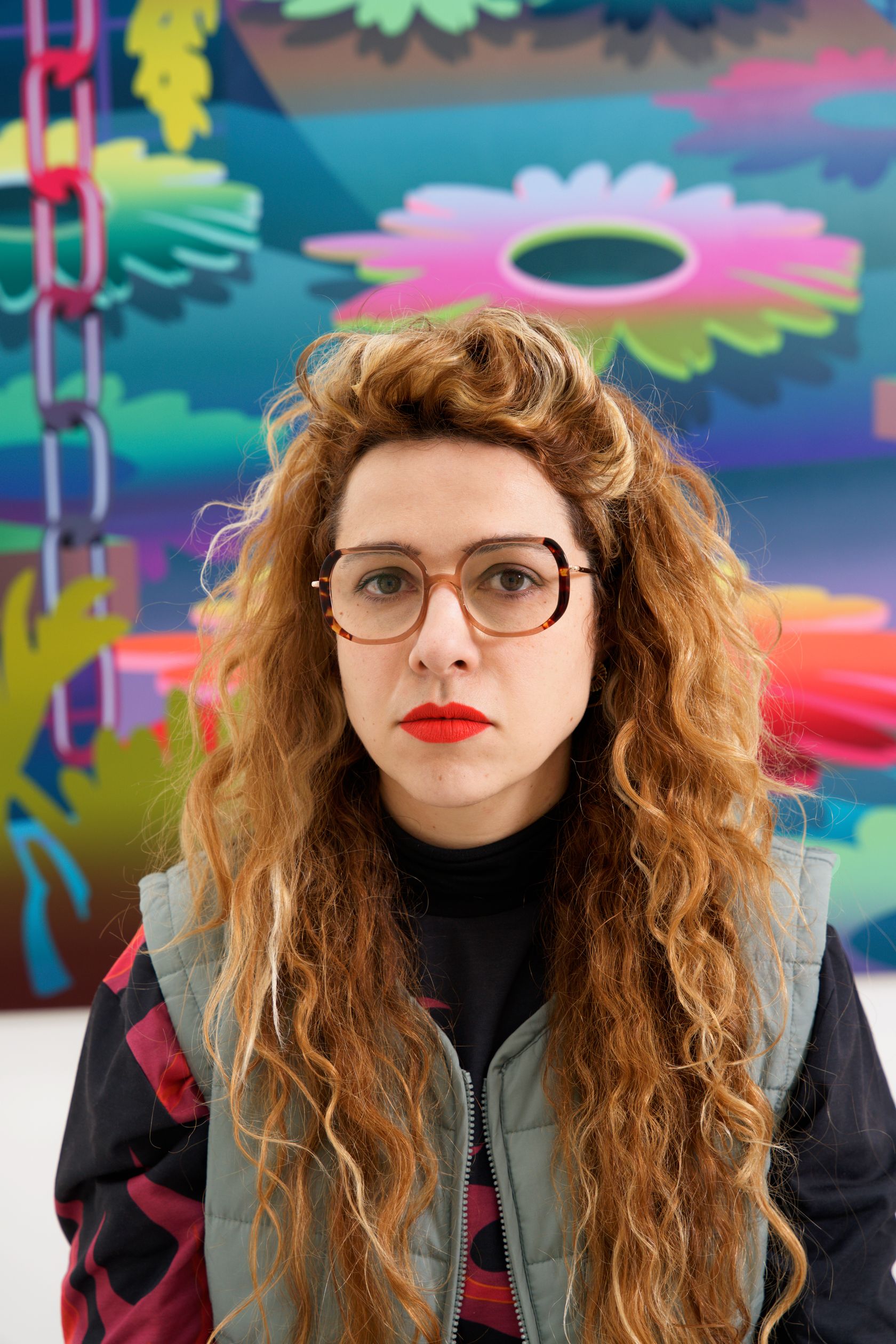
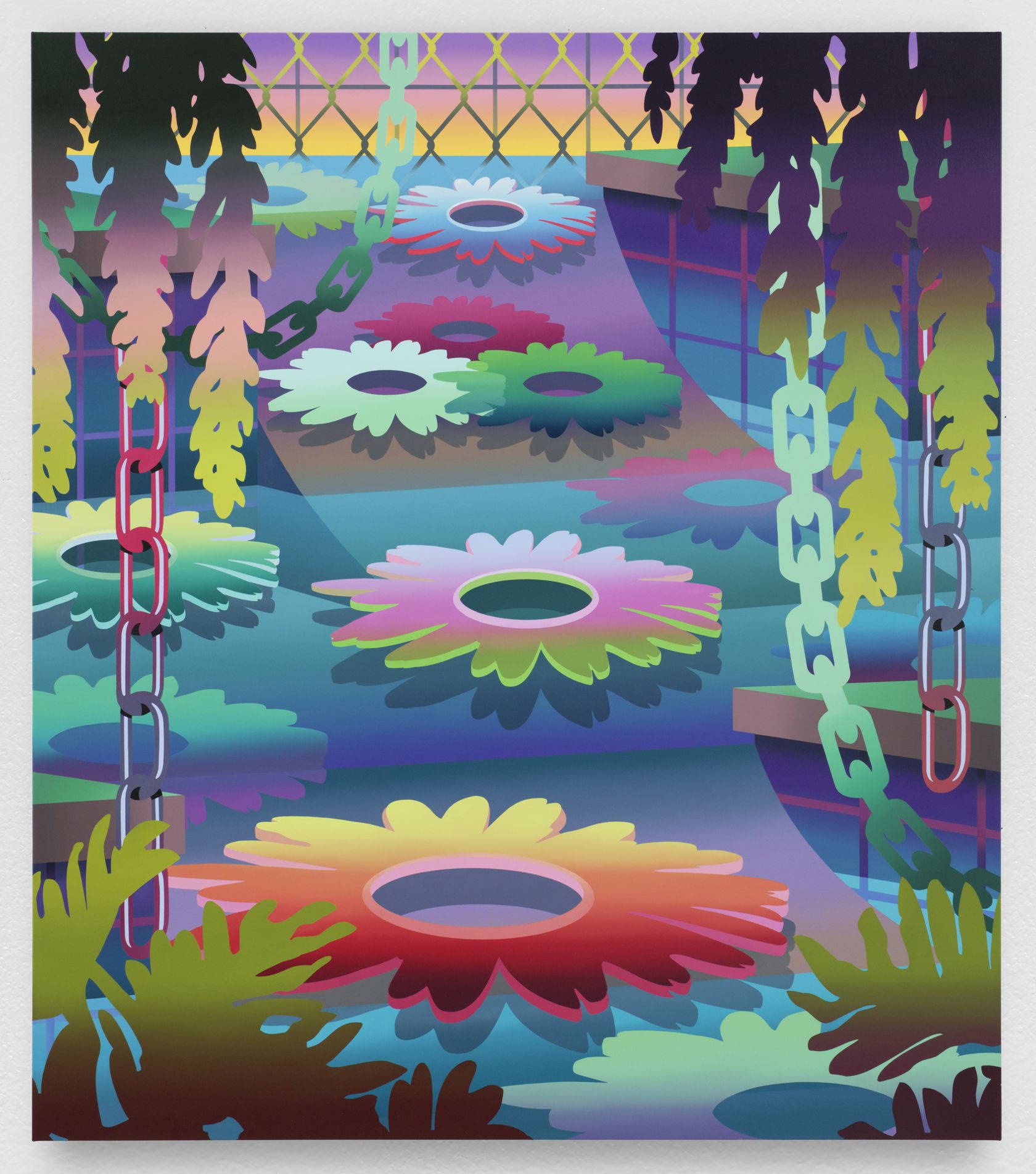
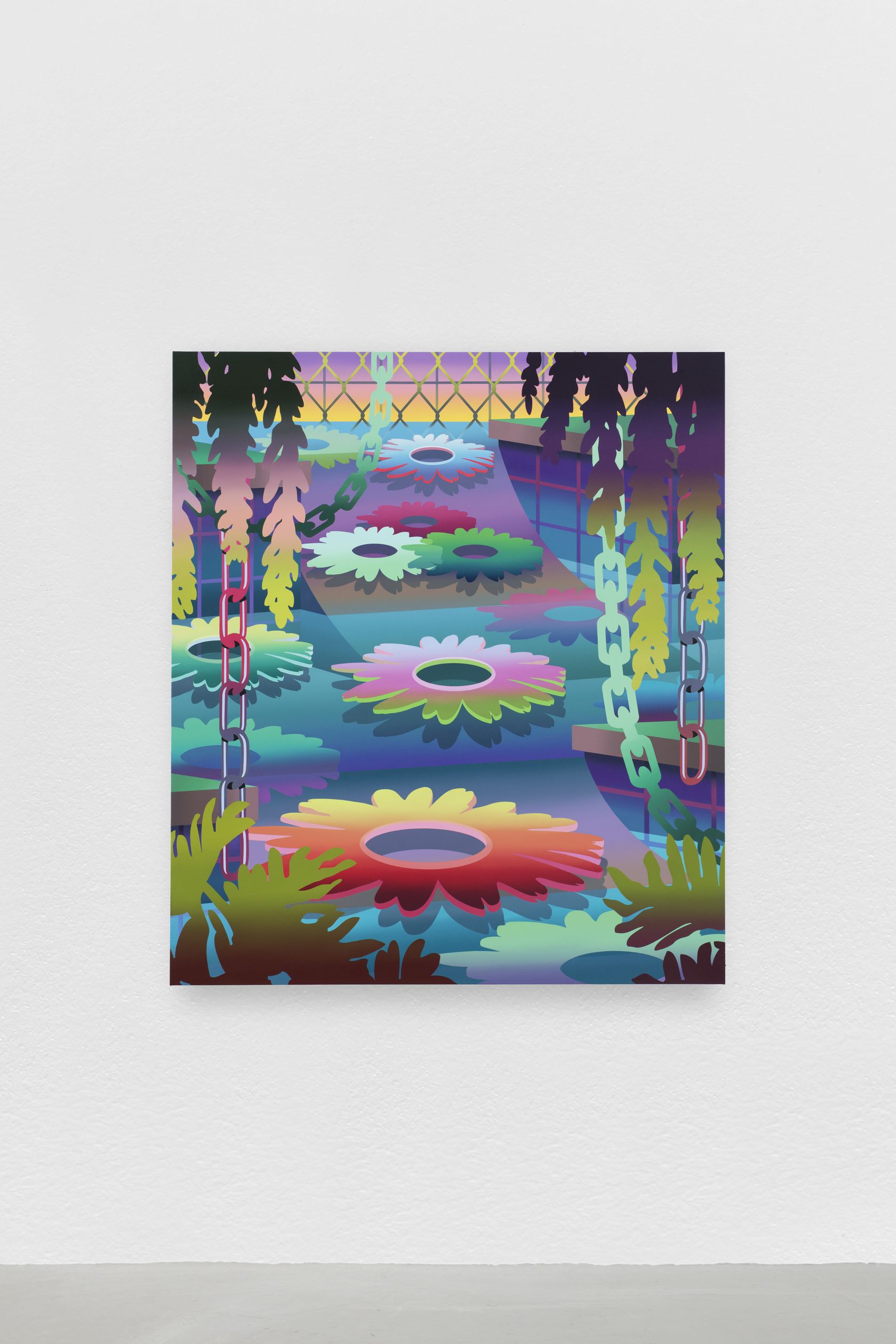
- Amélie Bertrand
- Wrong Way , 2023
- Oil on canvas
-
- 160 ×
- 140 × cm
- 63 ×
- 55 1/8 × inches
Since the 1990s, Françoise Pétrovitch has produced one of the most powerful bodies of work on the French art scene. Amongst the numerous media she has explored—ceramics, glass, ink washes, painting, print and video—drawing retains pride of place. In constant dialog with the artists who have preceded her, she has been able to measure herself against the incontrovertible motifs of “high art”—Saint Sebastian, still lifes, etc. Pétrovitch’s art reveals an ambiguous world, willingly transgressive, playing with conventional boundaries and eluding any interpretation. Intimacy, fragments of life and disappearance, alongside the themes such as the double, transition and cruelty run through her work, which is inhabited by animals, flowers and beings, and whose atmosphere fluctuates between light and dark, rarely leaving the spectator unmoved.
She has enjoyed numerous solo exhibitions both in France and abroad. The FHEL in Landernau (FR) hosted a major retrospective of her work and a monographic exhibition was dedicated to her at the BnF, Paris in 2022. In 2018, she was the first contemporary artist to be awarded a solo exhibition at the Louvre-Lens. Over the past few years, Pétrovitch has produced monumental wall drawings and large format ensembles, for the Galerie des Enfants at the Centre Pompidou, the West Bund Museum, Shanghai, or for the Ballets du Nord Company. Her works are included in many private and public collections, most notably the Centre Pompidou, Paris (FR), the Voorlinden Museum, Wassenaar (NL), the National Museum of Women in the Arts, Washington D.C. (US), the Musée Jenisch, Vevey (CH), the Musée d’Art Moderne et Contemporain of Saint-Etienne (FR) and of Strasbourg (FR), the MAC VAL (FR) and numerous regional art centers throughout France as well as the Salomon and Guerlain Foundations.
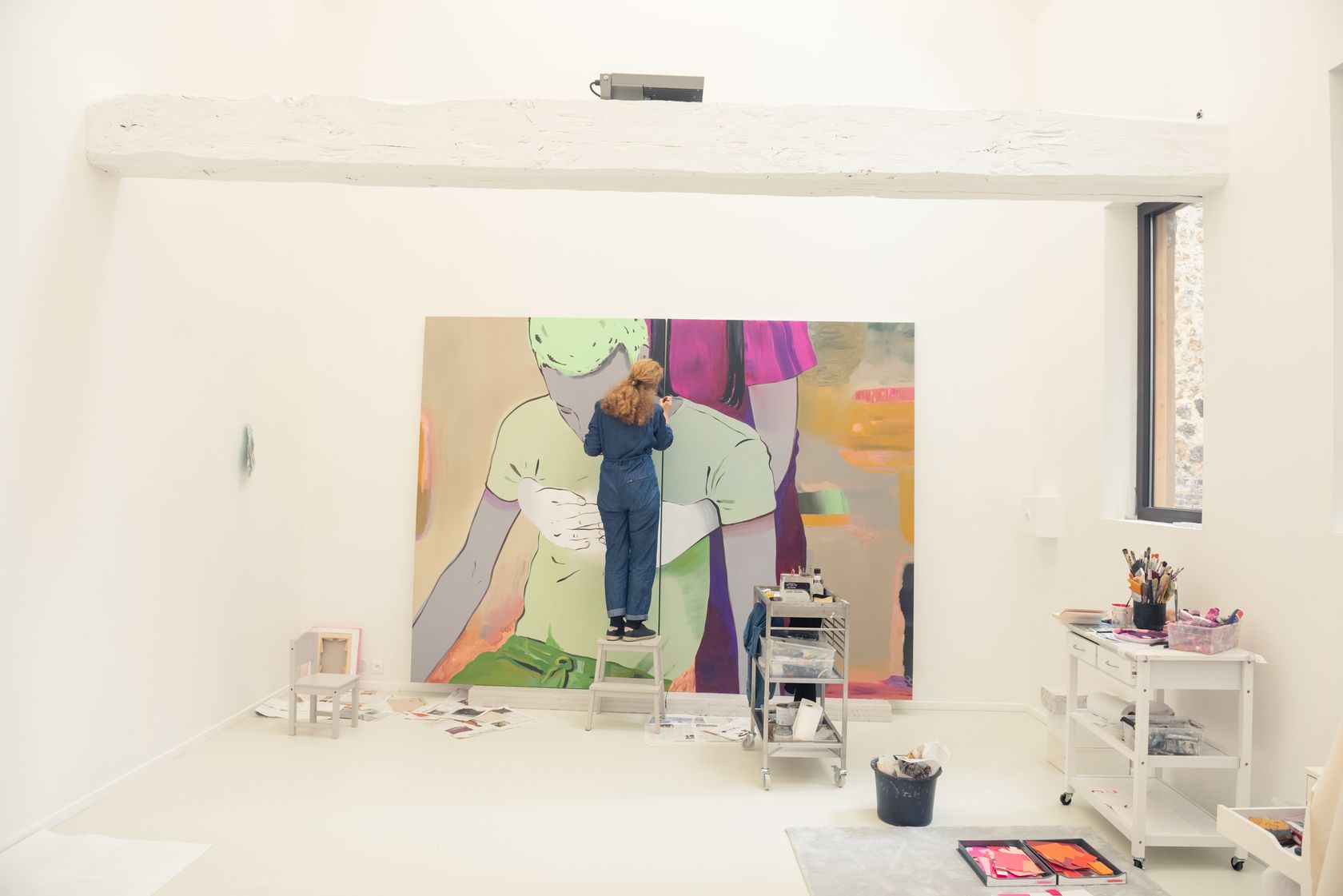
Abraham Poincheval (born 1972 in Alençon, lives and works in Marseille) is an insatiable explorer. Whether by crossing the Alps while pushing a capsule he used as his shelter, or by enclosing himself for a week in a rock, his—itinerant or static—expeditions require total physical commitment. The inhabitable sculptures which the artist conceives are laboratories allowing him to experience time, enclosure or immobility. They are the envelope that hosts the performer, an object that disturbs the landscape, and which exists through word of mouth.
The works and performances of Abraham Poincheval are subject to numerous national and international exhibitions and invitations. In 2017, the Palais de Tokyo curated a one-person show which led him to experience through two new performances (Stone and Egg) the temporalities of the animal and the mineral kingdoms. Solo exhibitions have recently been hosted at the Musée de la Chasse et de la Nature, Paris (FR), the Institut d'art contemporain - IAC, Villeurbanne (FR), La Criée, contemporary art centre, Rennes (FR), the MAC VAL, Vitry-sur-Seine (FR) and the FRAC Paca, Marseille (FR) to name a few. In 2019, Abraham Poincheval is part of the International Exhibition of the 15th Lyon Contemporary Art Biennale where his film Walk on Clouds is screened for the first time. His work is held in the collections of the Museum Voorlinden, Wassenaar (NL), the Centre national des arts plastiques - CNAP, Paris (FR), the Musée-Forum de l'Aurignacien, Aurignac (FR), the MAC VAL, Musée d’Art Contemporain du Val-de-Marne, Vitry-sur-Seine (FR), the Musée d'art du Valais, Sion (CH) and the FRACs Corse, Franche-Comté, Limousin, Occitanie and PACA (FR).
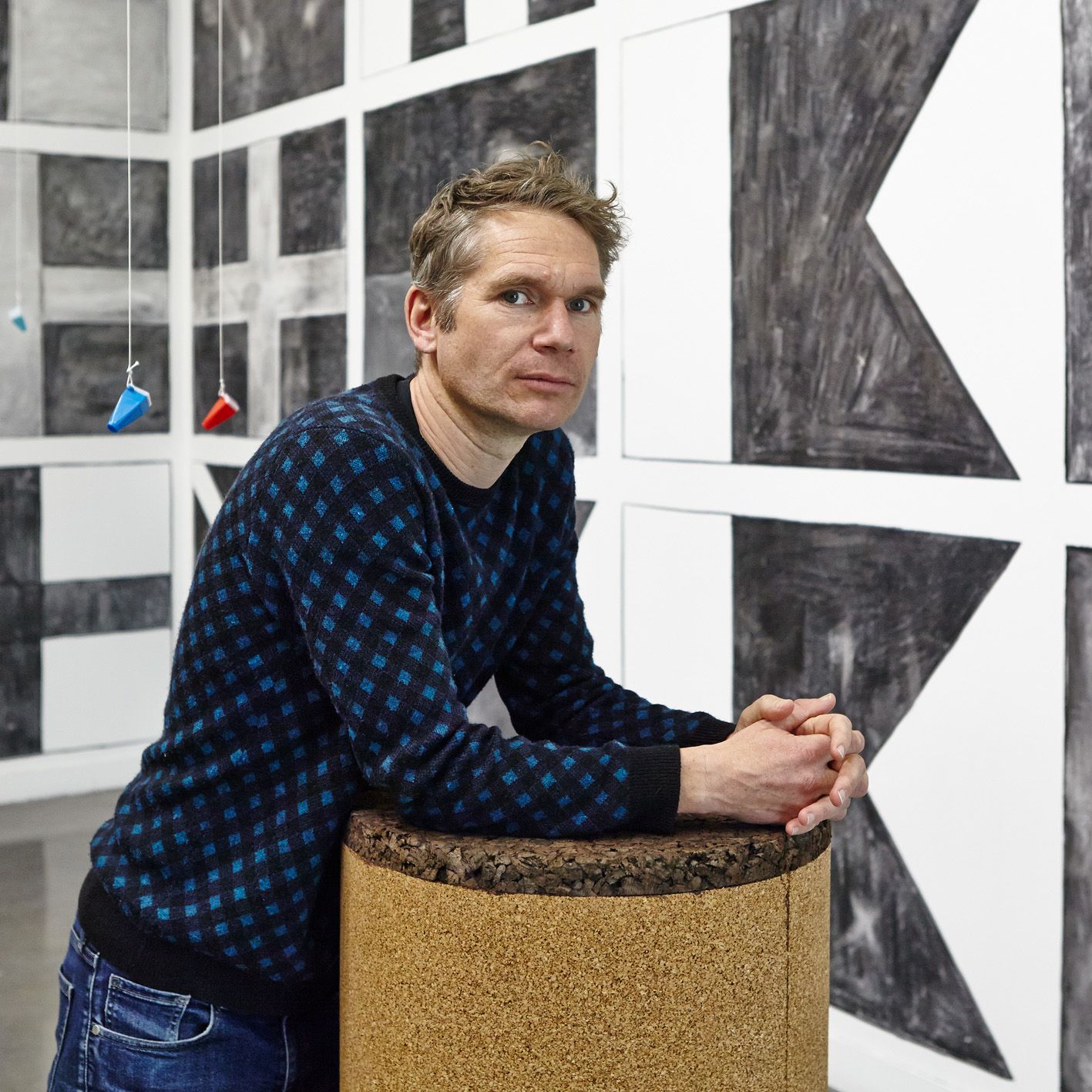
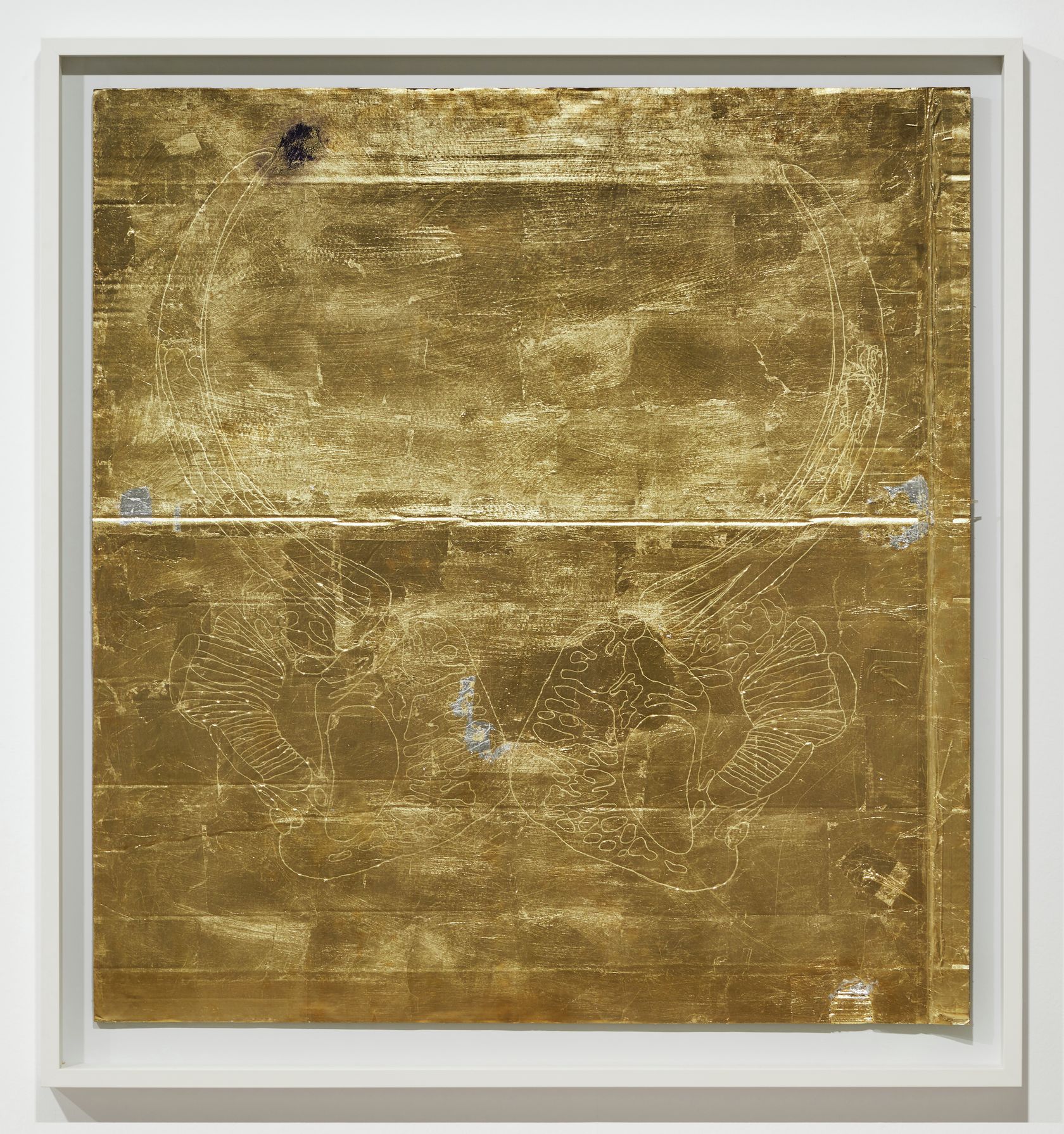
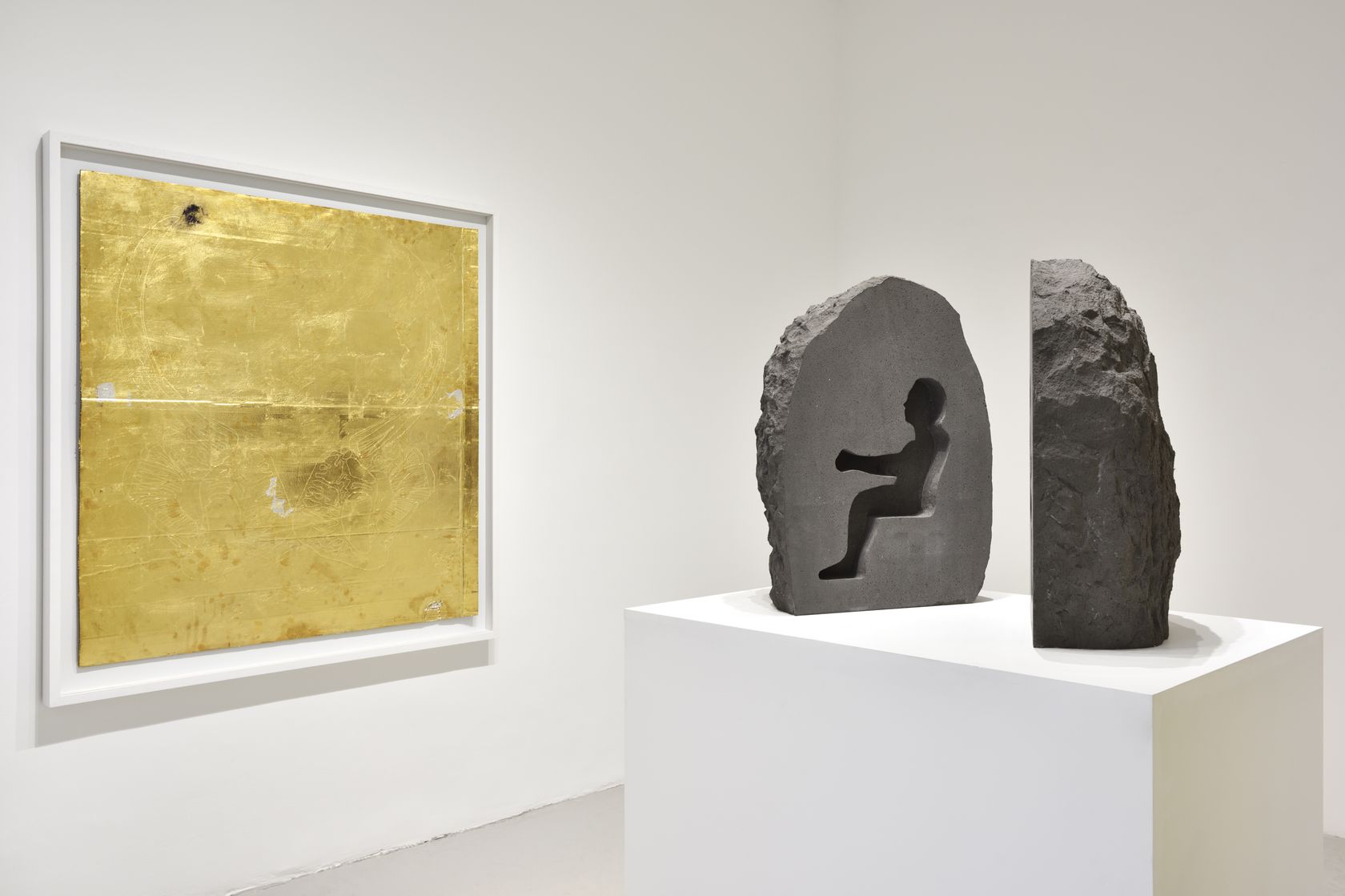
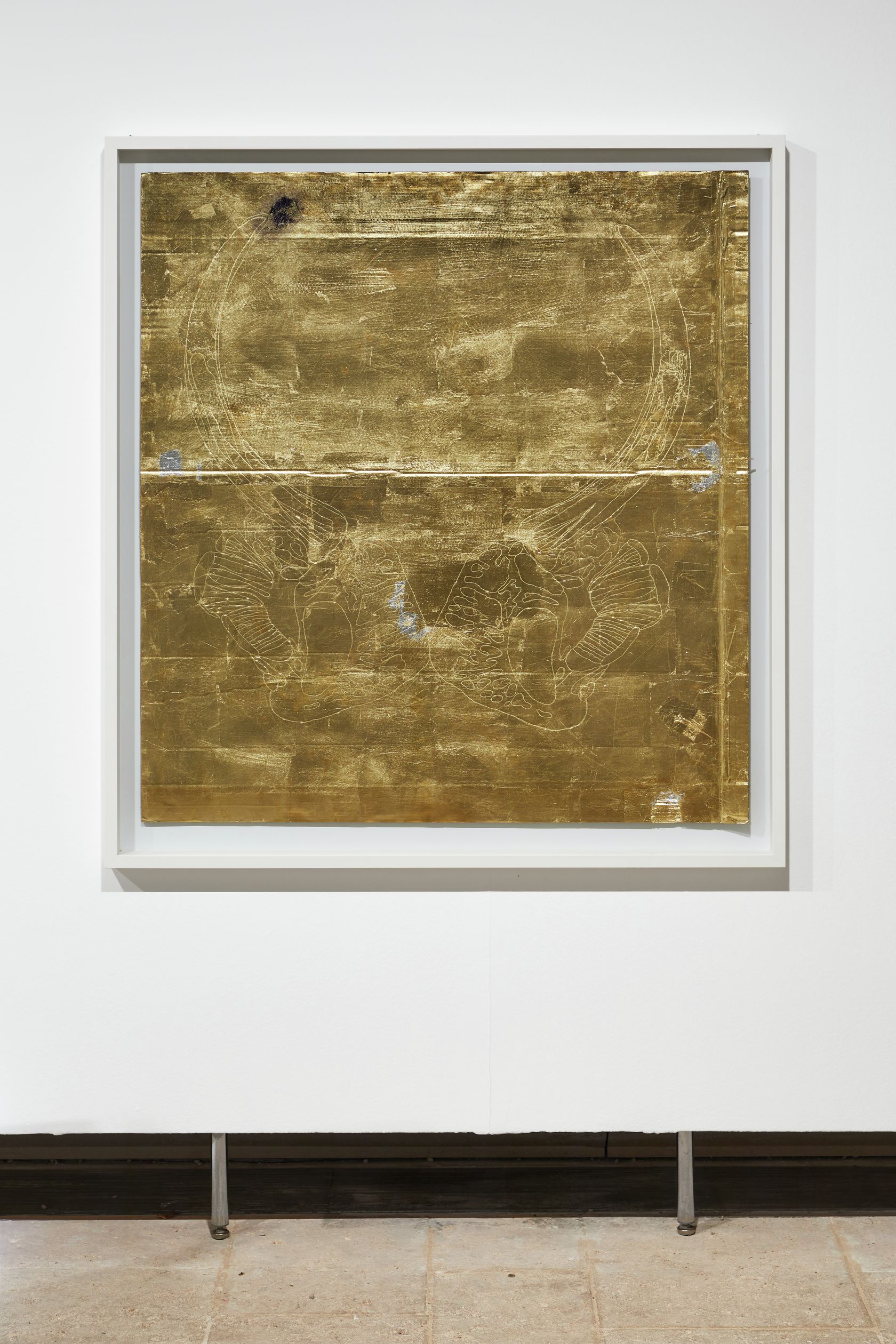
- Abraham Poincheval
- Lion Man in the Tusk , 2020
- Drawing on gold leaf mounted on cardboard
-
- 130 ×
- 120 ×
- 5 × cm
- 51 1/8 ×
- 47 2/8 ×
- 2 × in
- framed
Stefan Rinck’s stone figures form a motley and comical community of, for the most part, animals, chimeras and monsters. They wear costumes and masks; are endowed with particular symbols or characteristics, some bear the names of heroes of Greek mythology or of legend. Rinck’s sculpted figures make up a discordant but related assembly of non-humans: they come from elsewhere, an archaic imaginary world, woven from myths and legends. With his collection of fauna, the artist is exploring a comical, imaginary yet realistic vein, breathing new life into its iconography, using a technique typical of the Middle Ages: sculpting his figures directly from stone.
Rinck’s sculptures remind us of the figures of Roman art, which populate the columns and tympana of churches. They share the same morphology and style, the hybrid aspect of the chimera and monster. These are grotesque figures, in which we recognize the vitalist comedy typical of medieval realism which could be observed during the parades of jesters and buffoons at religious and popular festivities. Yet if the Middle Ages seem to color Rinck’s art, its frame of reference in fact crystalizes around a number of “Gothic” obsessions of the Romantic kind: a taste for mythology and folk tales, for different epochs and cultures for the fantastic or figures of hubris and excess.
Stefan Rinck’s work has been subject to many exhibitions in Athens, Berlin, Brussels, Los Angeles, Madrid, Munich, Paris and features in the collections of the Frac Corse, Corte, (FR), the CBK Rotterdam (NL) and the Museum De Hallen, Haarlem (NL). In 2018, the work The mangust of Beauvais is installed permanently in the city of Paris at 53-57 rue de Grennelle (Beaupassage). In 2019, Stefan Rinck is part of the 100 Sculptors of Tomorrow published by Thames & Hudson.
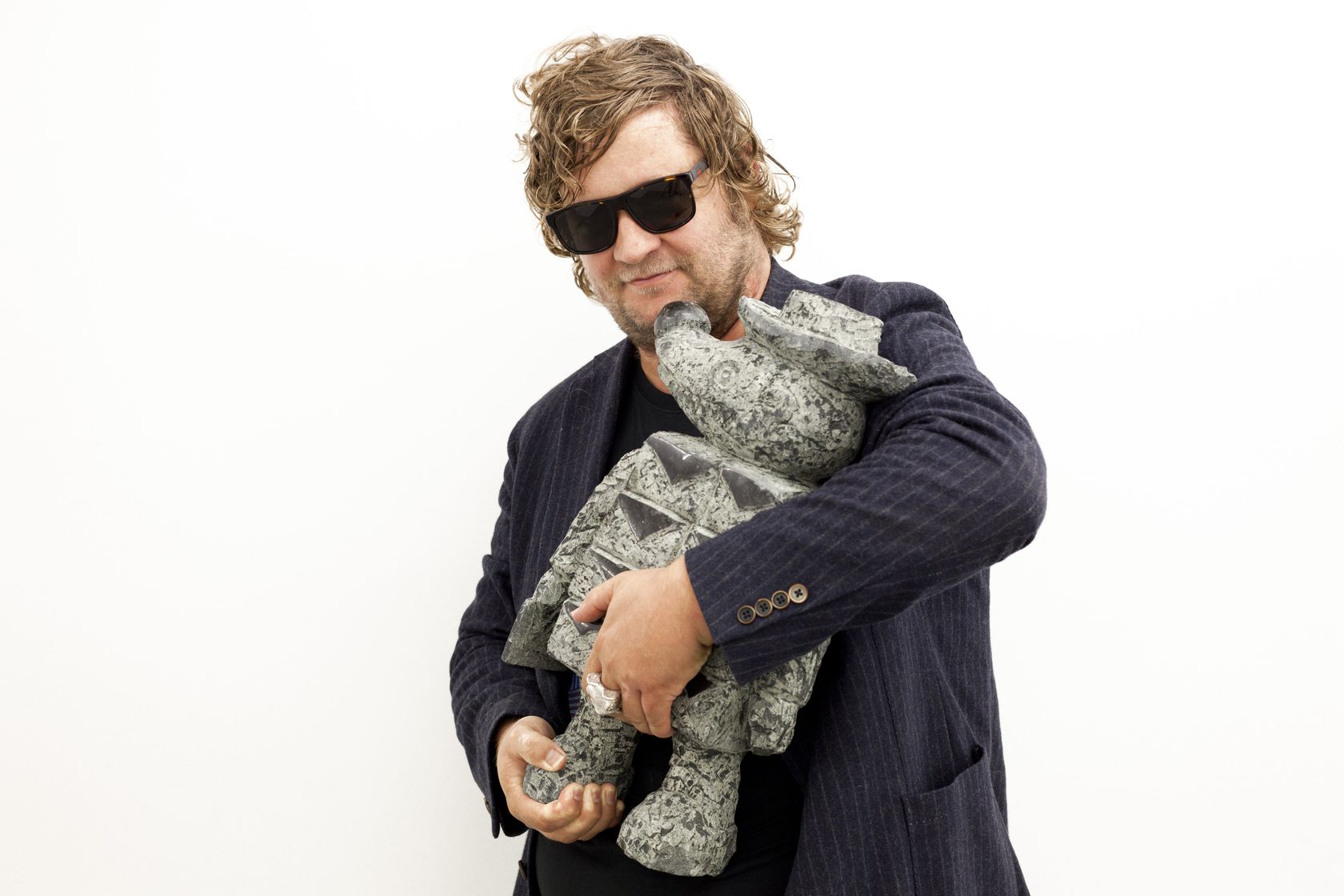
Moffat Takadiwa creates large format sculptures from materials found on garbage dumps, notably computer parts, plastic bottle-caps, toothbrushes and toothpaste tubes. After gathering great quantities of these small objects and sorting them by color and shape, the artist weaves these discarded scraps into rich wall hangings. Once suspended, these post-industrial fabrics, through their intricate beauty, acquire an aura of ritual or totemic artifacts.
Born in 1983, Moffat Takadiwa lives and works on the outskirts of Harare in Mbare, one of the largest recycling centers in the country and an important hub for the informal economy. Belonging to the post-independence generation, his work reflects his preoccupation with issues such as consumerism, inequality, post-colonialism and the environment. Since the earliest days of his artistic career, he has used his practice as a platform for the rehabilitation of his community, working with young local artists and designers, with a view to founding the world first artistic center based on the use of reclaimed materials.
Moffat Takadiwa has exhibited his works in the major institutions of Zimbabwe as well as abroad, most notably at the Craft Contemporary (US), during the exhibition organized by Jeffrey Deitch and Gagosian at the Moore Building in Miami (US), at the ARoS Kunstmuseumat, Aarhus (DK), the Jameel Arts Center, Dubai (AE), the MACAAL, Marrakesh (MA) and the Arnhem Museum (NL). His works are included in numerous public and private collections including the CNAP, Paris (FR), the FRAC Alsace (FR) The Fondation H, Antananarivo (MG), The Jameel Arts Center, Dubai (AE), The Arsenal Contemporary Art, Toronto (CA) and the CC Foundation, Shanghai (CN).
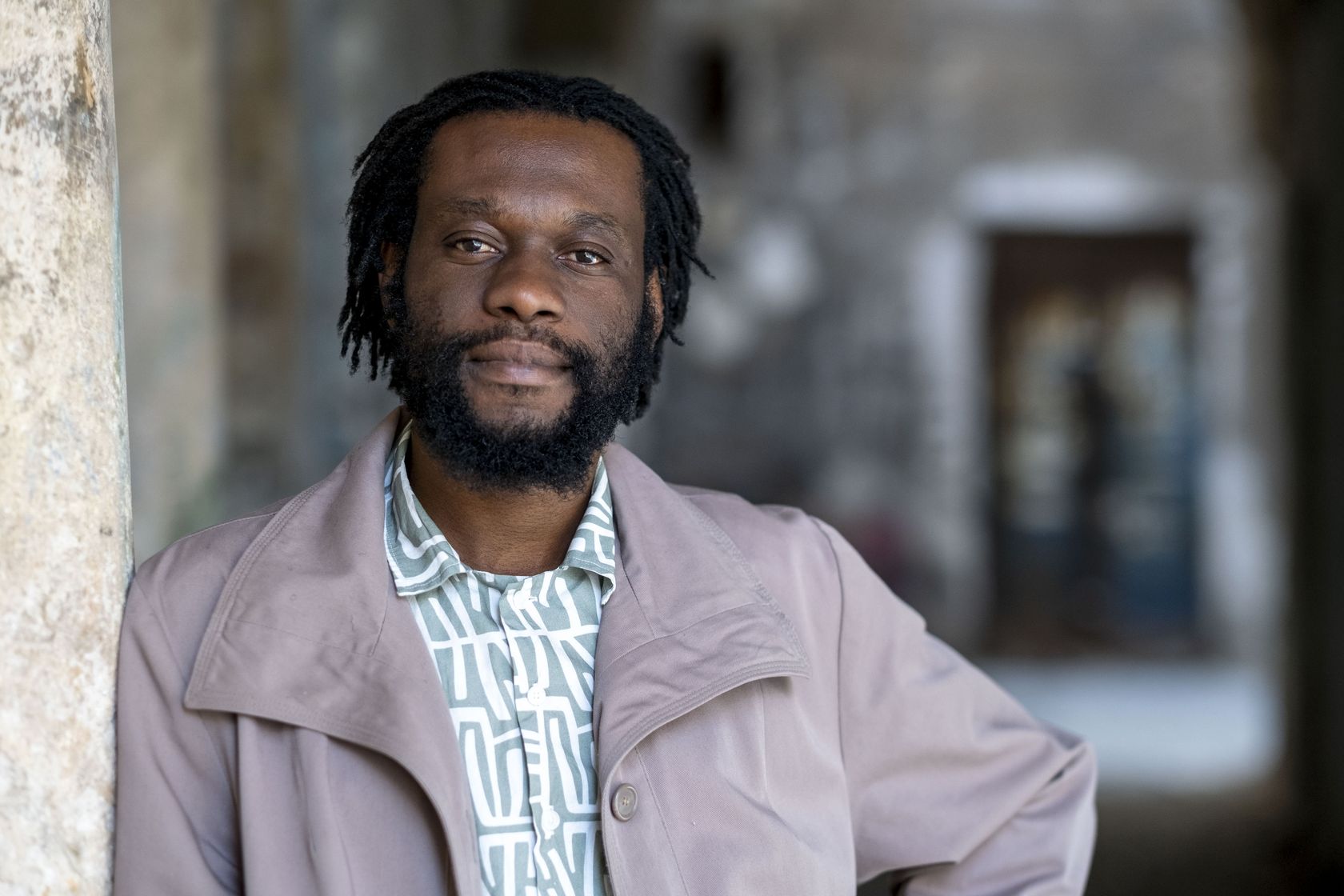
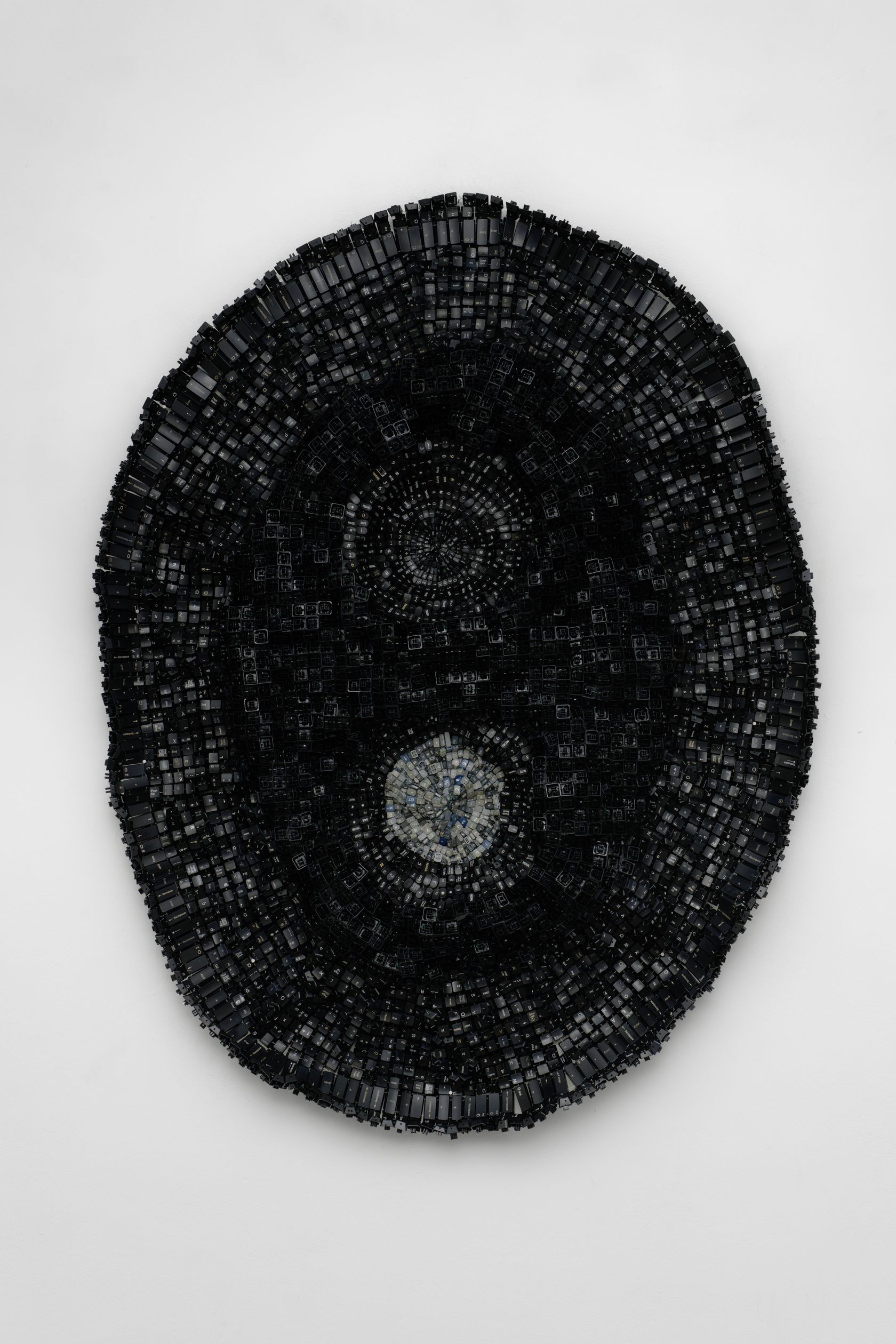
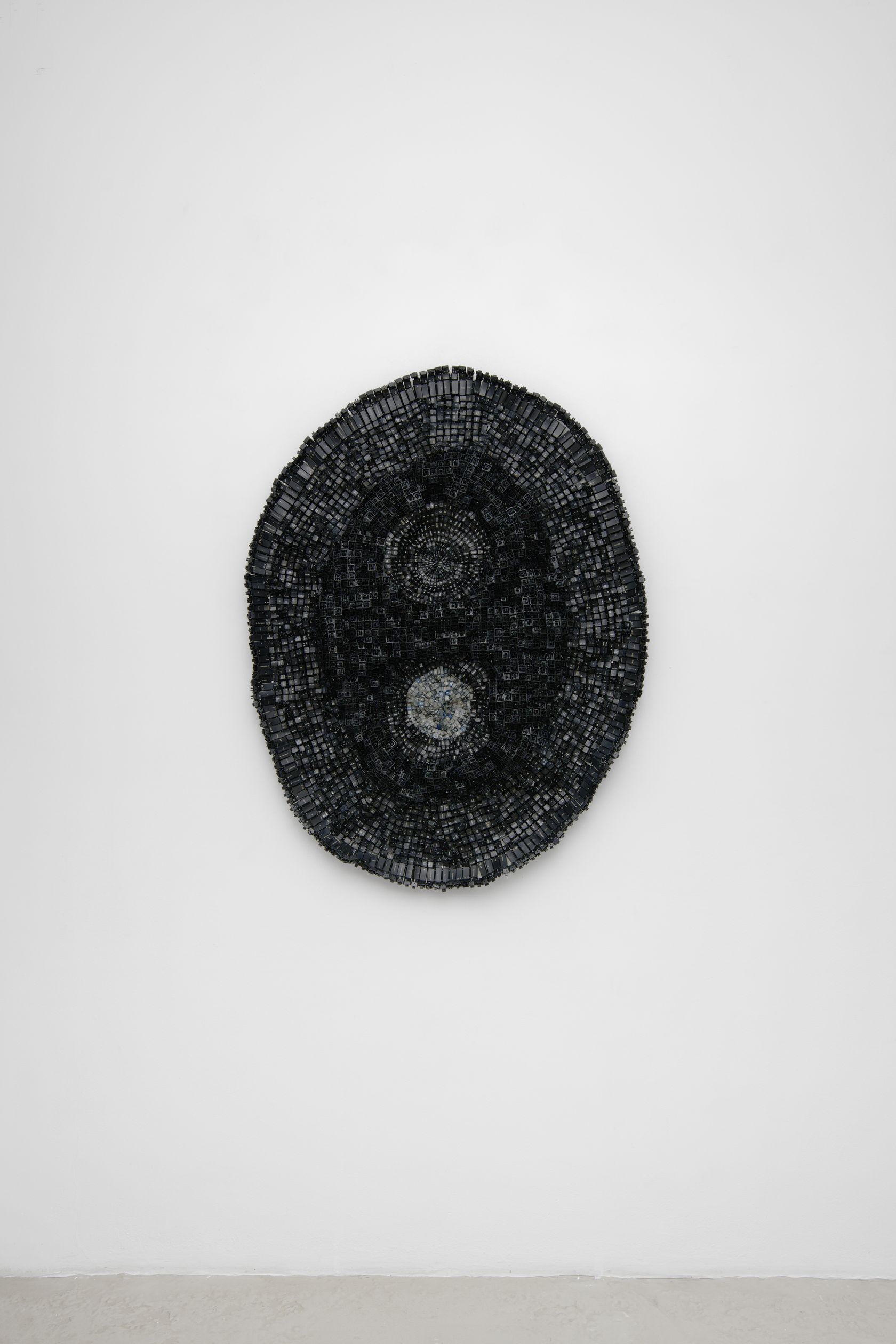
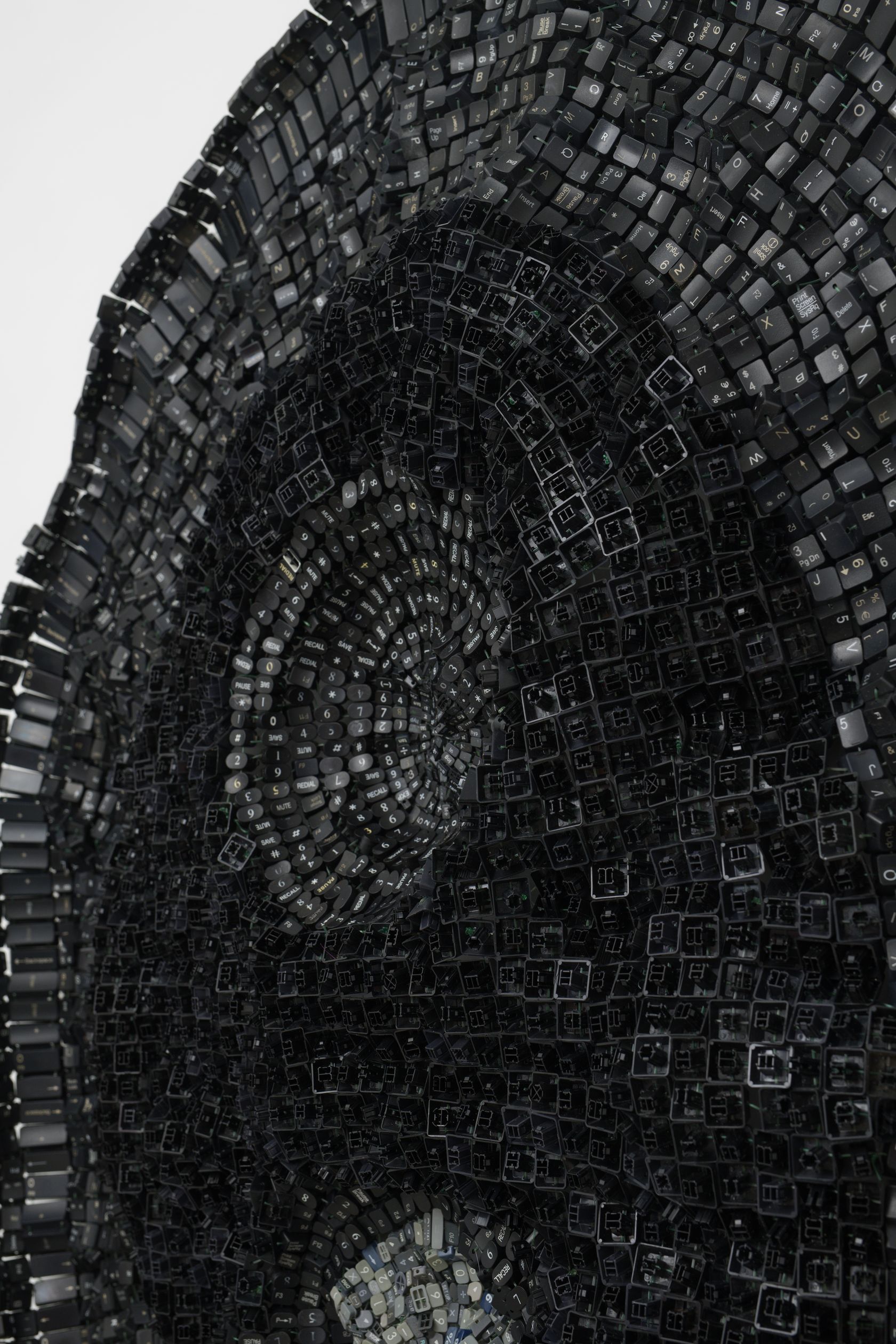
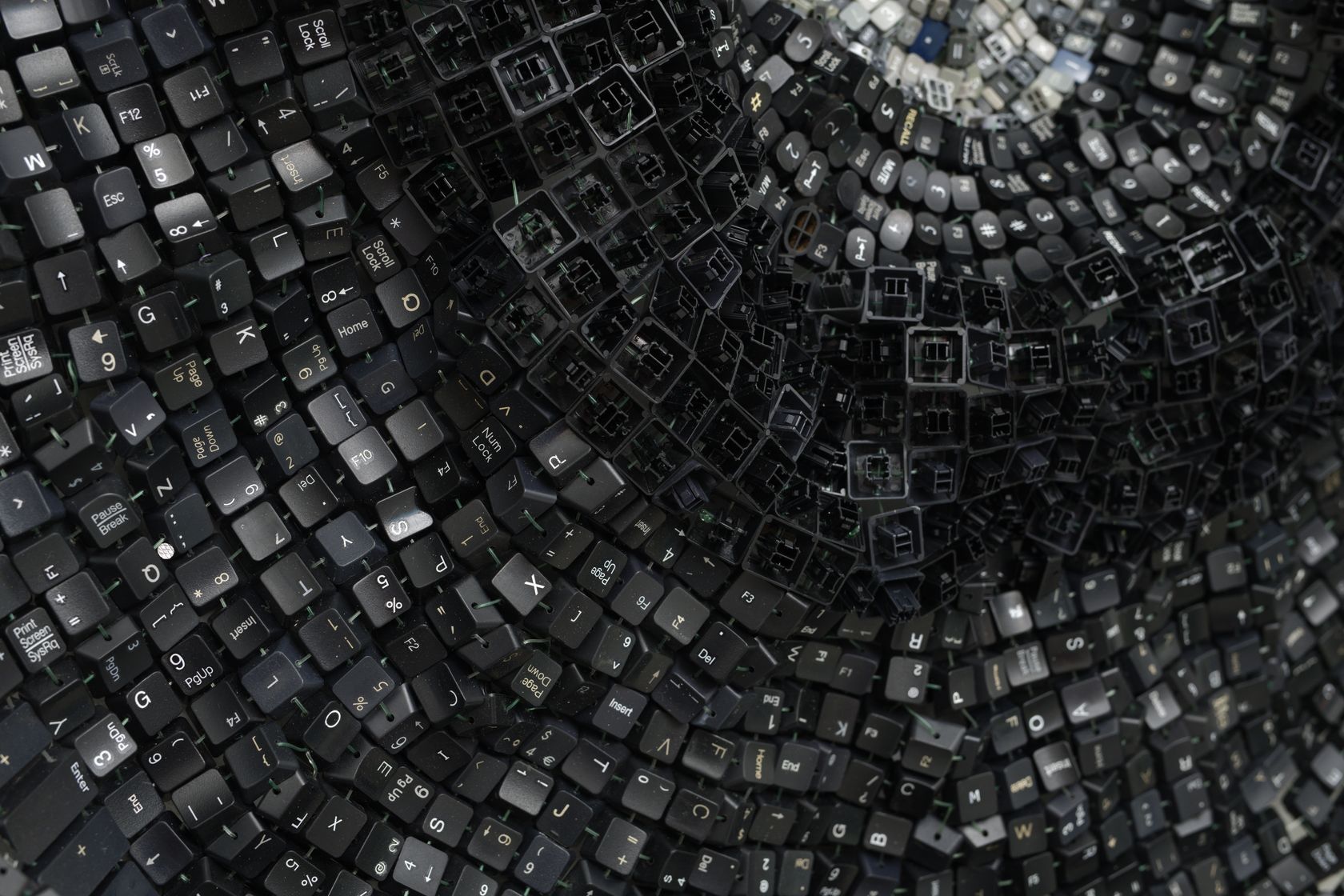
- Moffat Takadiwa
- Colonial product II , 2023
- Keyboard keys in plastic
-
- 127 ×
- 100 × cm
- 50 ×
- 39 3/8 × inches
Within their practice, Gert and Uwe Tobias have revived a wide range of traditional image-making techniques—woodcut printing, low-relief sculpture, drawing using typewriters, watercolor, gouache, ceramics and lacemaking—into which they breathe new life using contemporary means. Their oeuvre is mainly influenced by the myths, costumes, crafts and commonplace motifs of their native Transylvania, subverted and fused with elements of popular culture, abstract art and contemporary graphic design. From this rich pictorial repertoire, they create a varied body of work in which legends and folk tales, carnivalesque figures and archaic elements are subject to constant metamorphoses.
Born in Romania in 1973, the twin brothers Gert and Uwe Tobias have been developing a collaborative practice since 2001. Their four-handed work bears witness to the perfect symbiosis of their individual gestures, striving towards a common goal. Today, they live and work in Cologne, Germany. The twin brothers have recently enjoyed exhibitions at the MoMA in New York, the Sprengel Museum in Hannover and the Pinakothek der Moderne, Munich, both in Germany, The Dhondt-Dhaenens Museum in Deurle, Belgium, the Whitechapel Gallery in London, the Kunstmuseum Ravensburg, Germany, the Kupferstichkabinett at the Staatliche Kunstsammelungen in Dresden, the Maramotti Collection in Reggio Emilia in Italy and the UCLA, Hammer Museum of Art in Los Angeles as well as many other venues. In 2022, they were awarded the Prix du Dessin (Drawing Prize) by the Fondation d’Art Contemporain Daniel et Florence Guerlain.
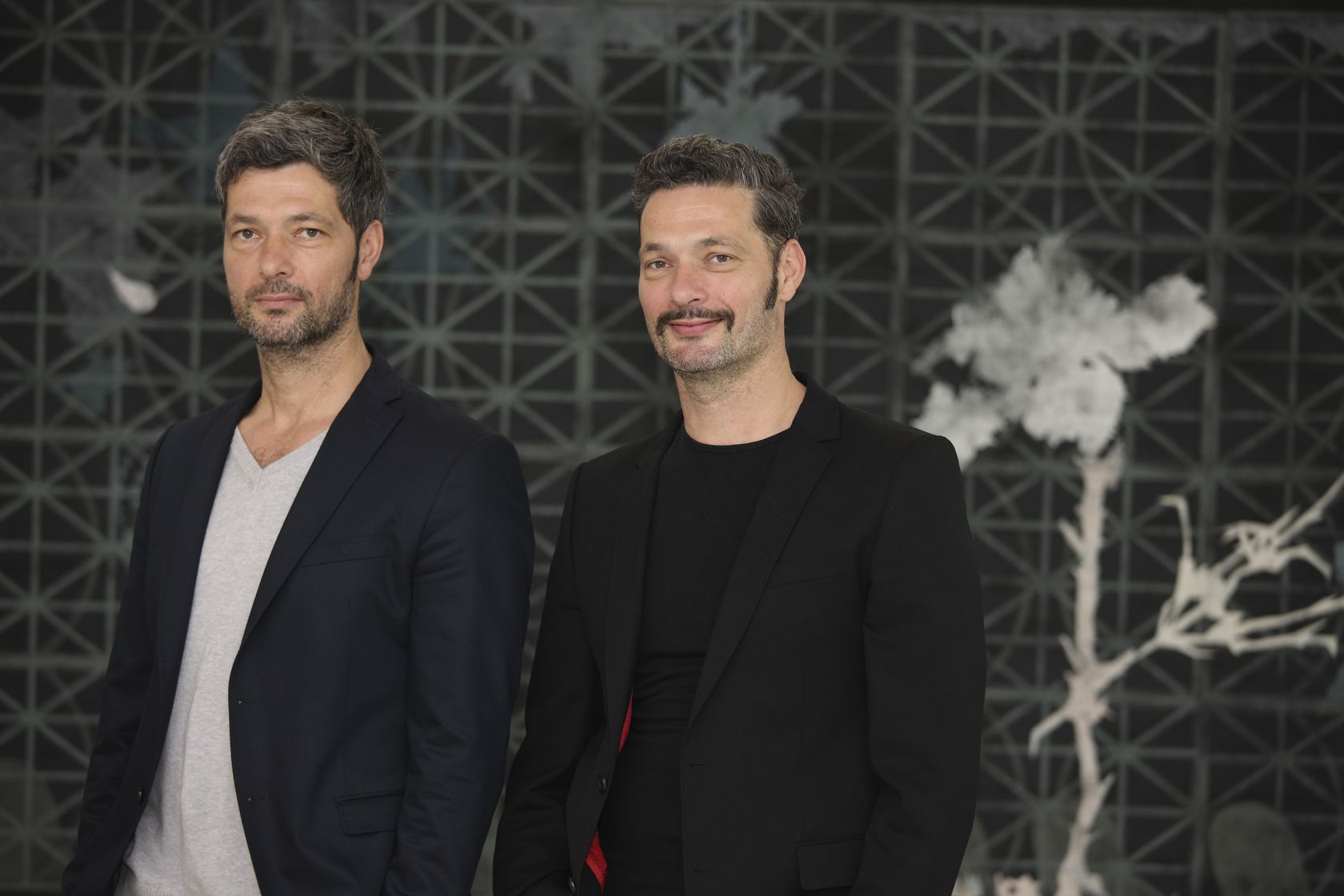
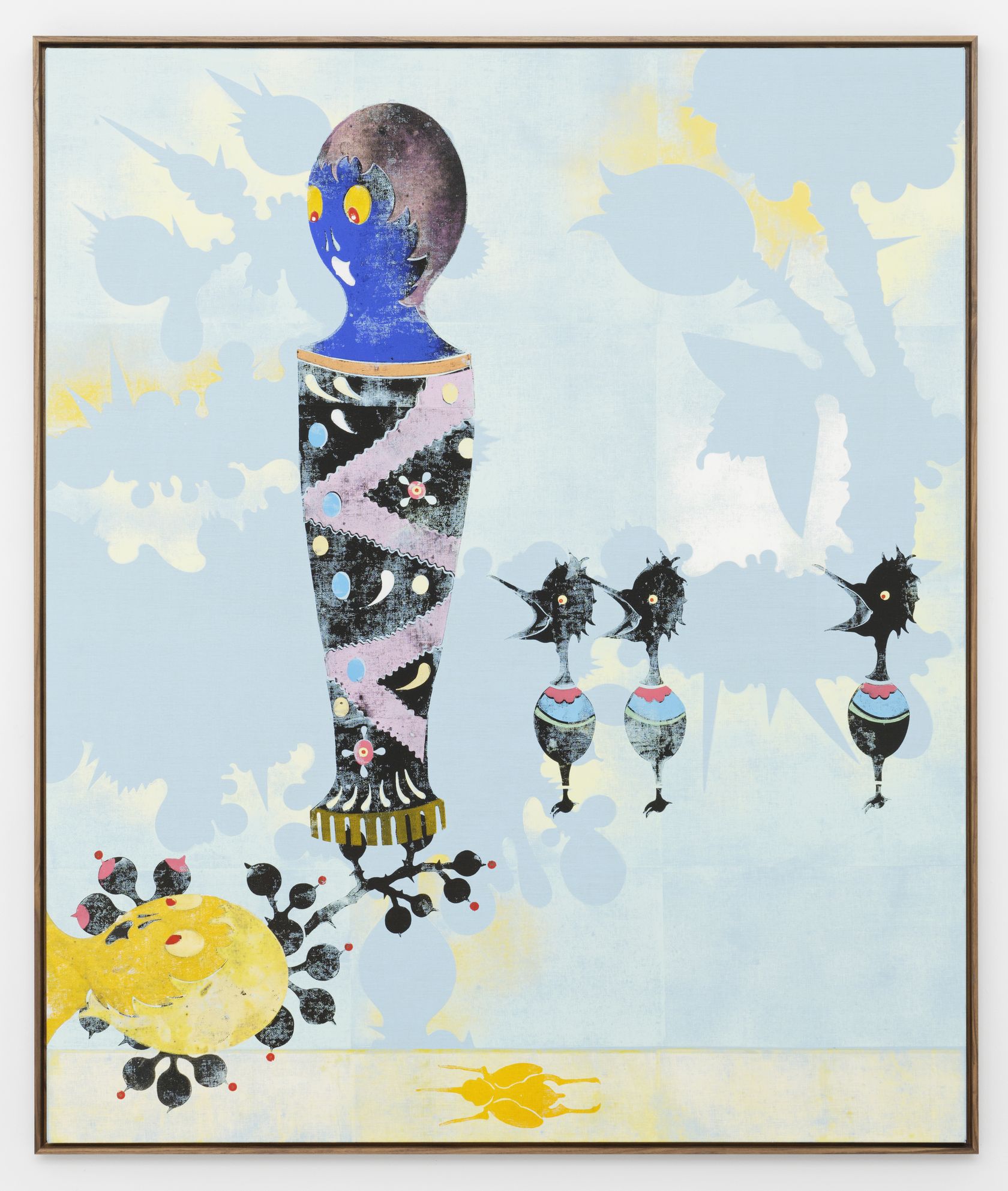
- Gert & Uwe Tobias
- GUT/H 3180/01 , 2023
- Woodcut on canvas
-
- 200 ×
- 168 × cm
- 78 3/4 ×
- 66 1/8 × inches
- unframed
- 205 ×
- 173 × cm
- 80 11/16 ×
- 68 1/8 × in
- framed

